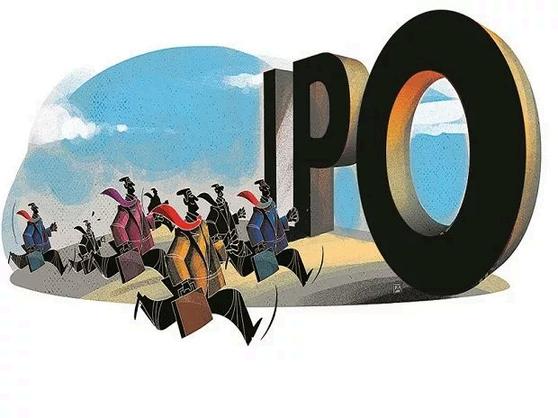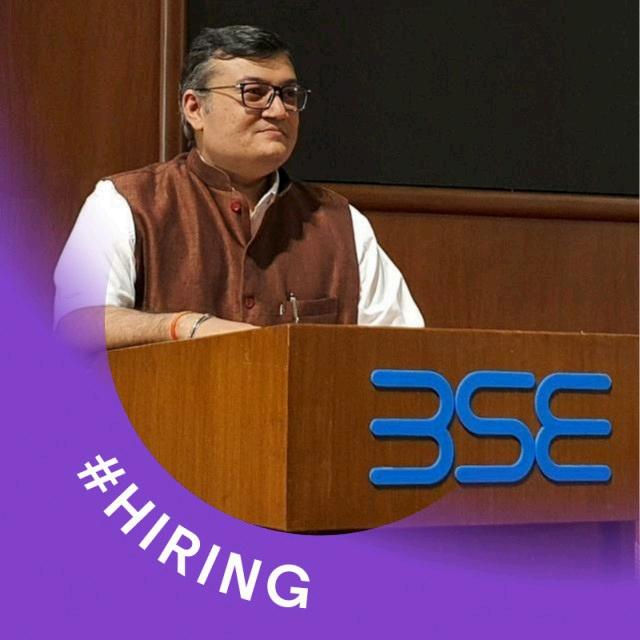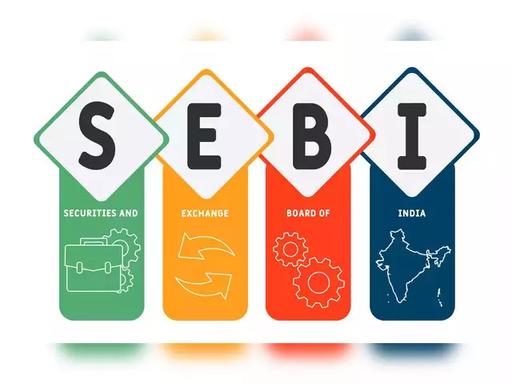
 Viral Bhatt Founder, Money Mantra
Viral Bhatt Founder, Money Mantra





Naveen Kumar Amar Interim CFO, Practus/Collecti veNewsroom
Rajesh Thacker
CFO, Rajiv Gandhi Cancer Institute & Research Centre



Amitesh Kumar
COO & CFO, Midland Microfin Ltd



CA Shekhar
Sood
CFO, Bajaj Capital Ltd













The FinTech Revolution
Your Digital Sherpa to discover Tech Enigma
Embark on a transformative journey with CXO Finance TechBOT, your gateway to a more inclusive and accessible financial world.
JOIN THE COMMUNITY
MAGAZINE I NEWSLETTER I WEBSITE
The CXO TechBot Team
Editor-In-Chief
Swati Gupta
Chief Strategist
Mohit Agarwal
Head of Content
Suhas Vittal
Content Editors
Suhas Vittal, Priya Sharma
Head of Technology, Delivery & Operations
Priyanka Gautam
Head of Design
Harsh Kumar
Communication Manager
Bhumika Nandhani
Director of Talent and Communication Manager
Ruchika Sharma
Digital Partner Fusionflare media
Creative Manager
Mayuree Rastogi
Web developer
Alok Bhade
Video & Production Manager
Bhawesh Mishra
Creative Co-coordinator
Umesh Tiwari
Customer Success Manager
Subha Gupta
CEO Swati Gupta


As we stand on the cusp of a digital revolution, the intersection of finance and technology is reshaping the landscape at an unprecedented pace In this special edition, we embark on a journey where innovation harmonizes with sustainability to shape the future of finance and investment
At Finance TechBot, we recognize the pivotal role of financial literacy in achieving individual and collective wellbeing. Through insightful articles, we explore how financial literacy empowers individuals to make informed decisions, ultimately leading to greater financial stability and prosperity. Moreover, we spotlight sustainable finance practices, showcasing how microfinance institutions are pioneering sustainable growth through ESG principles. Our aim is to inspire and inform readers about the transformative potential of sustainable finance in building a more resilient and equitable future

Sustainable finance and digital innovation are not just trends; they are the future. Together, let's shape a more resilient and equitable world.
In today's digital age, digital transformation is imperative for financial institutions to stay competitive and relevant. We feature a CEO's roadmap, outlining the importance of collaboration and digitalization in navigating the transformative landscape of finance
Furthermore, we delve into the intricate realms of investment management and ethical-strategic finance amidst ongoing disruption Through comprehensive expert insights and indepth analysis, we reveal the latest trends and pioneering strategies for achieving excellence in sustainable finance
As we embark on this exciting journey in Fintech , we extend our sincere gratitude to our contributors, partners, and readers for their unwavering support. We invite you to join us in celebrating innovation, collaboration, and sustainability in finance.
Thank you for being part of this transformative experience.
Happy reading!

Warm regards,
SWATI GUPTA CEO & Editor-in-Chief










A Finance Leader's Guide to Going Public 12 The IPO Roadmap Index 8 Innovations in Sustainable Finance Exploring Green Bonds, Social Bonds, and Sustainability Pioneering Sustainable Microfinance with an ESG Vision 16 Midland Microfin 22 The Importance of Financial Literacy and its Impact on Financial Wellbeing Navigating SAP Implementation: A Roadmap for Transformation 24









Leadership Strategies for Finance and Supply Chain Heads 36 Building HighPerformance Teams Index 30 Digitalisation and Collaboration A CEO’s Roadmap for a Transformative Financial Landscape Changing the Digital World in Web 3.0 42 NFTs 44 Sustainable Investment Excellence Lessons from Leaders in ESG Integration Aligning Investments with Lifelong Goals Charting Your Financial Future 48 30








The CFO's Role in Driving Innovation and Growth Amidst Disruption 60 Strategic Finance Index 54 Ethical Finance Building Trust through Corporate Governance Adapting Talent Acquisition to Thrive in the New Normal 64 Leading the Charge 70 The Future of Wealth Management How Fintech is Changing the Game




72 From Regulations to Recovery
SEBI's Proactive Measures in Resolving India's Unclaimed Securities
78 Taxation in the Digital Age
Leveraging Technology for Seamless GST Compliance



90 The Rise of Robo-Advisors
How FinTech Software is Transforming Investment Management
94 Blockchain Technology for Digital Financial Inclusion in the industry 4.0, towards Sustainable Development
Index
Innovationsin Sustainable Finance
ExploringGreenBonds,Social Bonds,andSustainability
Emerging technologies have not only opened the door to an advanced world but have also instilled an urgency across industries to advance while keeping a greener future at the forefront. The financial sector is experiencing a paradigm shift as environmental and social concerns gain momentum. Enterprises are re-designing their strategies. This environmental awareness has led to an increase in the adoption of sustainable finance, a plan to restore the balance between financial gains and ecological and social transformation Importantly, this shift proves that sustainability can be profitable and offers a bright financial future.
As financial institutions are integrated with the global economy, they are also susceptible to climate change, resource depletion, and environmental degradation From physical consequences, such as natural disasters damaging properties, leading to increased credit for banks, as loans become an urgent resort for environmentally compromised areas, to reputational and regulation risks, the banking sector is not immune to environmental concerns.
Therefore, in a world where the finance sector and global economy are deeply intertwined, green bonds and social bonds have become
the two cornerstones of Environmental, Social, and Governance (ESG) that are reshaping the financial sector into a sustainable industry Beyond mere concepts, these innovations are instrumental in offering enterprises and investors a reliable way to create a more sustainable future Together, Green, Social, and Sustainable (GSS) bonds accrued a staggering $3.8 trillion by the end of 2022






May 2024 08
GreenBonds:Pillarsofa SustainableFuture
To grapple with the rising concerns of unprecedented environmental challenges affecting financial institutions, the banking sector has introduced an innovative tool to ensure a sustainable financial future Green bonds are debt instruments issued by governments, corporations, and international organisations to finance ecological projects, such as renewable energy, clean transportation, waste and water management, and energy efficiency
Mutually beneficial to both issuers and investors, green bonds are the capital needed to accelerate the energy transition and pave the path for a sustainable economy. These bonds assist issuing bodies with diversification by attracting new investors who wouldn’t align with traditional issuing techniques. They also improve the reputation of financial bodies by allowing them to create a comprehensive framework for ensuring regulatory compliance and reducing funding costs.
On the other hand, green bonds offer high financial returns to investors along with transparency and accountability Green bonds require regular reporting, leading to higher transparency and lower risks. This commitment to transparency ensures that investors can make informed decisions, fostering a sense of security and trust in the financial system India has been leading the charge of green bond adoption in Asia since 2021, with the country’s green bond issuances reaching $21 billion in 2023
SocialBonds:CombatingSocial Challenges
As the financial world pushes the boundaries of innovation and transformation, social bonds are paramount in addressing environmental concerns and gearing towards a sustainable economy. Social bonds are
critical tools in sustainable finance, offering the banking industry an opportunity to contribute to social development while maintaining profits.
Social bonds bridge the gap between social growth and financial stability by addressing and resolving social issues, such as education, healthcare, affordable housing, and economic accessibility and inclusivity What makes social bonds impactful is their ability to ensure financial returns while guaranteeing positive social change by mobilising capital and providing it for social projects, thereby reducing poverty, providing better living conditions, and ensuring social equity.


www CXOTechBOT com 09
BeyondGreenandSocialBonds: EmbracingSustainability
Green and social bonds are the centre of the seismic shift the financial industry is witnessing They broaden the scope of economic inclusion and foster social progress. These innovative instruments intertwine seamlessly with the Environmental, Social, and Governance (ESG) concept, making waves for positive financial and social change.
Governments and financial institutions across the globe are implementing innovative approaches to meet ESG goals. Indian regulatory bodies, such as the Reserve Bank of India, issued a framework for accepting Green Deposits, encouraging investors to invest in funds from green projects. In order to accelerate energy and financial transition, this initiative carves a greener future for India, where sustainable investments and financial gains align with environmental concerns.
ESG offers investors a valuable toolkit not limited to and by traditional financial metrics.
Transparent knowledge of their environmental, social, and governance responsibilities equips investors with the power to make informed decisions ESG factors when integrated with conventional financial tools empower investors to evaluate their sustainability credentials, ensuring they invest in projects championing for a sustainable future.


GearingforaSustainable FinancialFuture
Various trends may drive sustainable finance, but it isn’t a trend itself; it is a monumental shift in bringing environmental consciousness and financial stability together The amalgamation of green and social bonds and ESG factors fosters innovation, building a more sustainable tomorrow Leaders and financial institutions have the power to spearhead this transformation, ensure that economic decisions contribute to a greener and healthier planet, and usher in a new era of sustainable finance where financial services are equitable and inclusive.

May 2024 10


The IPO Roadmap

AFinanceLeader'sGuidetoGoingPublic May 2024 12
or a finance leader, the career path is laden with milestones and accomplishments Among the myriad feats lies an Initial Public Offering (IPO), a pivotal moment that marks a new chapter of growth fueled by capital and heightened brand recognition
An IPO represents the amalgamation of financial expertise and strategic planning. It unlocks a new dimension for establishing and maintaining a public track record However, the road to a successful IPO is a journey of its own; it demands navigating a complex landscape of financial considerations, intricate processes, and meticulous planning the three pillars that form the foundation of a perfect IPO roadmap.
TheIPOChecklist:StrategicTipsand Considerations
The journey towards a flawlessly executed IPO commences with setting clear objectives, creating a comprehensive vision board, and conducting a thorough assessment of the company’s assets. Before embarking on the dynamic journey of an IPO, a finance leader must address three fundamental questions:
Goals and Long-Term Planning: Does the company’s long-term objectives align with the IPO?
Financial Planning: An IPO bridges the gap between an organisation’s operations and the public. Is the company’s financial position robust enough to brave the public eye?
IPO:PhasesandStages
The journey of a company from a private entity to a publicly traded company is a momentous occasion for any financial leader. It is a turning point in a company’s trajectory, for it defines the relationship between the organisation and its audience and the organisation and investors seeking an exciting financial opportunity. Thus, an IPO unfolds in stages and phases, each crucial for a stock market debut
The IPO journey is strategic. Meticulous planning, ideally starting 12-24 months before the public offering day, is crucial for a successful public debut This extended time frame allows the company to lay a solid foundation for operating as a public entity by establishing a robust accounting and governance framework and assembling a reputable team of advisors.
Market conditions: The market is unpredictable Does the current market create a supportive environment for IPOs? LeadinganIPOisathrillingyet high-stakesventure.Asuccessful launchcancatapultthecompany tonewheights.However,it necessitatesaclearvisionand meticulousplanningtonavigate thehurdlesandunlockthe exhilaratingrewards.

—CA.ShekharSood
Planning the IPO
F
www CXOTechBOT com 13
This team typically includes investment bankers, legal counsel, auditors, and an Investor Relations (IR) team to facilitate seamless communication with investors throughout the IPO process and beyond, ensuring a smooth transition into the public market
Preparing the IPO
The company transitions to the IPO preparation phase after forming a capable advisory team and establishing a comprehensive and robust governance and accounting infrastructure. This crucial stage involves securing the services of an investment bank and forging a collaborative partnership The Invest banking team will play a significant role in this process, crafting a compelling narrative that effectively communicates the company’s unique value proposition, appealing to potential investors and driving them to participate in the offering and invest in the company’s stocks
The third stage of the IPO process occurs within the final six months before the listing date This critical period is marked by designing a registration statement, which serves as a prospectus for investors. This document details the company’s goals, past achievements, and financial performance, alongside a qualitative clear vision for its prospects Simultaneously, the company also discloses its financial results in the prospectus which are not more than six months
The registration statement is filed with SEBI and stock exchanges for approvals Finally, post the regulatory approvals, the investment bank and the company will extensively market the IPO to investors and discover the price of the IPO through the book building process
Post Public Transformation
The successful execution of an IPO marks the beginning of a new chapter for the company becoming a publicly traded entity. However, the journey of the IPO process underscores the importance of delivering on the promises made to investors during the transaction phase. Therefore, the final stage of the IPO roadmap entails transparent and accurate reporting and timely trade disclosures It also extends to robust governance practices, ensuring the company operates with the highest ethical standards and fosters longterm investor confidence
An IPO is a groundbreaking day for any organisation, possessing the potential to propel the company to unimaginable heights. However, this journey is complex and arduous, requiring diligent planning, assembling a solid team, and fostering transparent communication with investors to ensure a successful IPO An IPO is not a sprint or an overnight task; it is a culmination of strategic framework and execution to solidify a company’s stature as a public entity.
 IPO Transaction
IPO Transaction
ThePerfectIPOPlan:TheRoadAhead May 2024 14

CFO, Bajaj Capital Ltd
CA Shekhar Sood is a seasoned business professional, Chartered Accountant with 18 years of experience across diverse industries in India, Asia Pacific, and Europe. He boasts a successful track record leading Finance, IT, Legal and Secretarial functions for established Indian listed companies and multinational corporations He is recognised for his passion for driving sustainable and profitable growth through strategic thinking and skilful execution.
Mr Sood’s comprehensive expertise encompasses fundraising, mergers and acquisitions, business development, and relationship management He fosters collaboration across diverse teams, leveraging his strong interpersonal and communication skills Currently serving as Chief Financial Officer at Bajaj Capital Group, his distinguished career encompasses leading MNCs across France, Germany, India, the US, and the UK, spanning various industries
With a commitment to continuous learning, an Alumni from ISB, Mr Sood holds certifications in IFRS, Lean methodologies, and business strategy. He has also done Global Advanced Management Programme from ISB-NUS These achievements, coupled with his extensive business acumen, position him as an expert in compliance (SEBI-MCA-FEMA), business restructuring, investor relations, and digital transformation. He also possesses a deep understanding of ERP implementation and upgrades, financial planning, treasury and change management, risk management, margin and cost optimisation, and cash flow management
He has been recognized as FE Business Leader 2024 by Financial Express and he has also won Best Technology CFO of the year 2025 award


www CXOTechBOT com 15
Midland Microfin PioneeringSustainableMicrofinance
withanESGVision
Microfinance, as exemplified by Midland Microfin Ltd. (MML),
serves as a cornerstone in fostering socioeconomic empowerment among marginalised communities MML's journey is defined by its unwavering dedication to principles of compassion, responsibility, and innovation



Over the past decade, MML has undertaken significant strides, extending its reach across


Leveraging technologically-driven financial services, MML has not only catalysed the elevation of income levels but has also facilitated improved access to crucial sectors such as education and healthcare, thereby illuminating a path towards a more promising future for underserved communities

PioneeringESGLeadership
ESG


I h th
(E i t l S i l
May 2024 16
For MML, the ascent of ESG principles wasn't a newfound revelation; it served as a reaffirmation of deeply ingrained values Beyond mere financial success, ESG embodies MML's enduring dedication to effecting profound social and environmental change while upholding the utmost standards of ethics and governance.
SpearheadingSustainableFinancing
MML demonstrates a steadfast commitment to environmental sustainability, marked by tangible actions aimed at reducing energy consumption and mitigating ecological impact across its operations. The organisation actively implements initiatives such as solar power systems at its branches, embracing renewable energy adoption. Additionally, MML employs energy-efficient technologies and effective waste management practices to minimise its environmental footprint.
Furthermore, MML's dedication to financing environmental impact is exemplified through its Water, Sanitation, and Hygiene (WASH) loan initiatives These efforts empower communities to access essential resources for sustainable living, extending beyond traditional microfinance
Through innovative products like solar lanterns, water purifiers, and energy-efficient appliances, MML has significantly curtailed greenhouse gas emissions by an impressive 21,479 tonnes. Moreover, its initiatives in renewable energy generation contribute substantially to climate change mitigation.
Remarkably, these endeavours directly empower over 3 6 lakh households with access to clean energy, setting a precedent for sustainable development within the microfinance industry
FosteringEconomicEmpowerment ThroughTechnologicalAdvancement
In a strategic move aimed at fostering economic self-sufficiency, Midland embarked on the innovative "Digital Didi" campaign, acknowledging the indispensable role of financial literacy and digital empowerment This pioneering initiative seeks to narrow the digital gap prevalent among marginalised communities by imparting essential digital skills and knowledge.
Central to the campaign's objectives is the enhancement of digital payment proficiency among our members, facilitating their journey towards financial autonomy through comprehensive digital literacy programs Moreover, "Digital Didi" serves as a platform for knowledge dissemination within communities, fostering a culture of information sharing and collaboration.
Midland Microfin Ltd recognises that digital literacy is a cornerstone for expanding access to a diverse array of financial services, thereby aligning seamlessly with its overarching mission to uplift underserved communities and promote financial inclusion.


www CXOTechBOT com 17
PioneeringSocialResponsibility: ExemplifyingEthicalPrinciples
At Midland Microfin Ltd. (MML), their dedication to social responsibility extends far beyond conventional financial services, embodying a deeply entrenched ethos that has guided their actions since inception. With a customer base exceeding 900,000, predominantly composed of women, they embark on a mission to enhance their quality of life by empowering them to establish income-generating enterprises
In their relentless pursuit of societal betterment, MML forges robust bonds with local communities through multifaceted initiatives. These encompass promoting women ' s empowerment, fostering financial inclusion, spearheading environmentally sustainable endeavours, and nurturing skill development programs
Furthermore, through their participation in the Reserve Bank of India's Depositor Education and Awareness initiatives, MML ensures the holistic well-being of their stakeholders. Notably, their flagship project entails the distribution of sanitary napkins, a cornerstone in their commitment to female hygiene and environmental stewardship through the utilisation of recyclable biodegradable
Collaborations with esteemed partners like Micro Energy Credit have enabled MML to pioneer clean energy lending programs, empowering their clientele to embrace sustainable energy solutions in their journey towards socioeconomic upliftment
Moreover, safeguarding the privacy and data security of their stakeholders remains paramount for MML, enhancing the credibility and efficacy of their offerings. Embracing digitisation and promoting cashless transactions not only streamline their operations but also advance their vision of fostering sustainability across all facets of their operations




ExemplaryGovernanceStandards
Midland Microfin Ltd. (MML) upholds a steadfast commitment to transparent and accountable governance, recognising its fundamental importance in fostering trust and credibility With an unwavering dedication to ethical conduct, MML ensures that its operations adhere to the highest standards of integrity and accountability
A robust system is in place to address grievances raised by stakeholders promptly and effectively, underscoring MML's commitment to listening to and addressing


May 2024 18
Diversity and inclusivity are integral values embedded within MML's organisational culture The inclusion of an independent woman director on the leadership team reflects MML's dedication to fostering diverse perspectives and ensuring equitable representation at the highest levels of decision-making.
MML places paramount importance on comprehensive risk management, underpinned by a well-structured policy framework and robust business continuity and disaster recovery plans. These measures serve to safeguard MML's operations and ensure resilience in the face of unforeseen challenges.
Investing in the ongoing training and development of its workforce is a cornerstone of MML's approach to governance Through continuous education on company policies and stakeholder engagement mechanisms, MML empowers its employees to navigate ethical complexities with clarity and confidence, fostering a culture of ethical excellence throughout the organisation.
ChartingthePathAhead
As Midland Microfin Ltd. (MML) looks to the future, its trajectory is guided by a steadfast commitment to ESG principles and the United Nations' Sustainable Development Goals. Envisioning a future characterised by sustainability, inclusivity, and prosperity for all, MML is poised to take decisive actions to realise this vision.
Embracing initiatives to reduce emissions from buildings and track emissions specific to the finance function, MML aims to make meaningful contributions to reducing greenhouse gas emissions.
Collaborating with national and international institutions, MML will invest in various ESG initiatives, including expanding solar power generation, improving e-waste management, adopting digital solutions, and promoting emissions reduction through E-bikes
In line with its commitment to diversity, MML will actively promote increased representation of women and differently-abled employees. Additionally, plans are underway to launch more sustainable loan products for green deposits, further enhancing stakeholder value Strengthening its risk management approach, MML will conduct thorough physical and transition risk assessments to mitigate potential risks effectively.

To solidify its commitment to ESG principles, MML will implement a robust governance framework and conduct significant impact assessments Embracing digital repayment collection to reduce paper usage, MML seeks to contribute to a greener future while fostering financial literacy among participants and offering complementary health check initiatives to all employees.
In its pursuit of advancing various ESG facets, MML will implement an advanced feedback mechanism to align its trajectory with evolving sustainability standards This data-driven approach will prioritise different sustainability goals and track ROI, and performance against them, ensuring that every action contributes to a more equitable and sustainable world
MML's journey epitomises the transformative power of vision, commitment, and values As more than just a microfinance institution, MML stands as a beacon of hope, driving positive change and demonstrating the profound impact that responsible microfinance can have on a global scale.
www CXOTechBOT com 19




COO&CFO,MidlandMicrofinLtd May 2024 20

The Importance of Financial Literacy and its Impact on Financial Wellbeing
Akey marker that indicates the dynamism of today’s world is the evolution of financial wellness Financial wellbeing is no longer limited to being a personal achievement; it has graduated to becoming a pillar of a robust and thriving society The concerns arising from financial stress are etched in every nook and corner of the industry, affecting workforce productivity, performance, and commitment Almost 75% of Indians do not have an emergency fund, forcing them to rely on EMIs in case of sudden layoffs, suggesting an upheaval in the financial industry This is where financial literacy makes a difference.
Financial literacy doesn’t only mean learning how to file taxes or a chequebook It is a broader concept, spreading beyond basic financial understanding. It encompasses the awareness and knowledge of financial tools needed to thrive amid unpredictable economic times. It includes understanding the mechanisms of debt management, budgeting, and responsible investment concepts that empower individuals to make comprehensive and informed financial decisions for an economically secure and stable future



May 2024 22
FinancialLiteracy:ACriticalLifeSkill
In an era where financial health governs better living standards and a financially sound future, financial literacy equips individuals with the ability to navigate unprecedented financial waters and gear towards accumulating wealth through saving and investment strategies while reducing debt. It is a lifelong, continuous learning that requires staying up-to-date with changing financial markets and terminology, such as interest rates, loans, and various investment models.
Handling Expenses: With financial literacy comes a holistic understanding of budgeting and expense management mastering the concept of creating attainable budgets, tracking expenses, and reducing financial burdens while simultaneously saving resources to repay debts
Financial Planning: The cornerstone of living safely and comfortably is fostering a culture of balancing spending and saving. Financial literacy is the key to creating a future without financial anxiety by setting aside emergency funds and reducing reliance on EMIs, paychecks, and high-interest credit cards.
Investing Confidently: What makes financial literacy an essential life skill is the knowledge it imparts, allowing individuals and employees to make informed decisions and build a riskaverse, cost-efficient, and easy-to-manage portfolio.
Fintech:TheBedrockofFinancial Literacy
The advent of financial technology has created ripples across the industry, revolutionising financial management. FinTech has unlocked a treasure trove of valuable information, tools, and services to boost financial performance and conduct financial tasks confidently and securely,
from online and mobile banking to investment applications. When financial literacy and FinTech join forces, they create a symbiotic relationship that allows individuals to harness the power of FinTech for their financial wellbeing.
This symbiotic relationship equips individuals with the knowledge to uncover the full potential of FinTech for their financial wellness Financial literacy empowers users to evaluate current and emerging FinTech tools and services critically. For instance, interactive budgeting applications automatically connect to bank accounts, enabling automated financial transactions while offering users valuable insights into their spending and saving habits Armed with this data, individuals can make informed budgeting decisions
Furthermore, FinTech leverages cutting-edge technologies like generative AI to provide 24/7, on-demand support Chatbots and virtual assistants can promptly answer financial queries, offer instant guidance on managing debt and saving strategies, and personalise the user experience
FinancialLiteracyandFinancial Wellness: TwoSidesoftheSameCoin
Financial literacy is an irreplaceable skill in the current financial market. Not only does it equip individuals with the confidence and knowledge to perform primary financial tasks, but it also reduces economic anxiety, fostering a secure environment and honing the ability to navigate the ever-changing financial industry

www CXOTechBOT com 23
Navigating SAP Implementation ARoadmapforTransformation
In today’s fiercely competitive environment, where operational efficiency and data management are crucial for business success, SAP implementation emerges as a transformative solution. SAP’s robust Enterprise Resource Planning (ERP) system not only streamlines operations and boosts productivity but also empowers datadriven decision-making. Moreover, it offers a remarkable return on investment, if harnessed to its full potential
However, despite its revolutionary potential to reform companies by centralising their core functions, SAP implementation can be a complex journey for small and medium enterprises., and in the service industry. Adapting to this software hinges on meticulous planning, collaboration, and understanding unique industry needs, making it a challenge that requires careful navigation.








May 2024 24
TheChecklistforSuccessfulSAP Integration
SAP implementation stands as a disruptive force, empowering organisations to unlock new levels of operational excellence. However, harnessing its power for business growth requires a carefully crafted roadmap that not only addresses the inherent challenges related to its integration but also proactively anticipates and mitigates potential roadblocks.
Catering to the Right Industry: Manufacturing vs. Services
SAP’s versatility lies in its ability to adapt to the unique challenges of different industries. Manufacturing companies leverage modules like Material Management (MM) for inventory control and Production Planning (PP) to optimise procurement and scheduling. Conversely, service-oriented businesses use Customer Relationship Management (CRM) and Project Management (PM) to achieve their goals Therefore, the first step in successful SAP implementation is understanding the target industry’s specific needs, trends, and processes. This knowledge empowers organisations to select relevant and compatible SAP modules and configure them to integrate with existing workflows seamlessly
Transparency is the Key
The second step in SAP implementation is maintaining transparency. The consultants, CFO, and CIO must clearly define all the schedules, costs, and results related to the SAP modules; they must collaborate to create an attainable roadmap and share it with management
Previous success stories of SAP implementation play a significant role in shaping and establishing SAP parameters and act as reliable benchmarks to measure the status and progress of SAP integration for achieving high benefits and ROI
Building the Perfect Team
The success of SAP implementation hinges on the strength of the team. A perfect team should include a core group of experts who understand the current business processes and are open to change. They should be supported by IT specialists and SAP consultants who provide technical expertise However, it’s not just about finding experts from each field; it’s about ensuring that every team member has a unique skill set that complements the team’s overall skills, such as business process management, data management, and change management
Three Pillars of Collaboration: CFO, CIO, and Stakeholders
While the CFO and CIO play an undeniable role in steering the wheel towards process and technological excellence, stakeholders are also the driving force behind operational success

www CXOTechBOT com 25
Their valuable input and insights offer a deeper understanding of the necessary features to champion change and design solutions to address communication and collaboration gaps
Resources are of the Essence
ThetruepotentialofSAPis unleashedwithcarefulplanning, changemanagement,and effectiveresourceallocation.Once SAPissuccessfullyimplemented,it servesasacatalystformaximised ROIandgains.
—RajeshThacker

Implementing SAP is not merely a strategy; it is a significant investment. It entails investing time, money, and resources into understanding the core systems and developing training modules to empower teams. However, transitioning to new software can be time-consuming and affect the workload Thus, organisations must be equipped with the proper tools and exhibit patience to tackle potential productivity challenges Recognising the time and effort invested by both team members and the enterprise fosters a culture of mutual respect, boosts morale, and encourages the adoption of new technologies
Additional compensation by the organisation also provides encouragement and motivation to cultivate a culture of continuous learning and incentivises teams to achieve monumental milestones during the implementation process.
Designing Compatible SAP Modules
The design phase is arguably the most critical stage of SAP implementation During this phase, the team meticulously selects and configures the most suitable SAP modules that align seamlessly with the organisation’s strategic objectives. This involves integrating a range of modules, such as Material Management, Finance, Operations, or HR, within a clearly defined timeline that takes into account their functional dependencies. For example, the Material Management module must be configured before implementing the Production Planning module to ensure optimal functionality. Therefore, the design phase serves the crucial purpose of identifying modules that work effectively independently and collaboratively to prevent bottlenecks and provide a seamless data flow across the entire system
May 2024 26
Testing, Executing, and Improving
Once the configuration stage is implemented successfully, the IT and core support teams perform User Acceptance Testing (UAT) to test the configuration and ensure the systems deliver optimal performance They conduct a soft launch of the product for two to four weeks in a controlled environment to monitor user experience and identify underlying concerns After the soft launch period, the teams can refine the system based on user feedback and continue the process until they find the perfect solution However, teams must continue testing even after the system goes live and monitor user reviews to ensure the stability of the software
SAP Implementation: The Launch Date
A phased approach to SAP implementation mitigates risk and fosters a smoother software migration for the organisation. By implementing the system in phases, targeted

departments can test it first to enable early identification and correction of any disruptions, allowing the team to refine processes before a wider rollout The success of these initial phases paves the way for a gradual, full launch, ensuring a more stable transition for the entire enterprise.
SAP implementation is a decisive factor driving business growth. By streamlining operations and enabling data-driven decision-making, SAP empowers organisations to achieve new heights of performance and efficiency While the road to successful implementation requires careful planning, collaboration, and a phased approach, the potential rewards are undeniable By leveraging the expertise of consulting teams and fostering open communication across leadership, businesses can harness the full potential of SAP and gear towards long-term success



SimplifyingComplexSAPAdoption
www CXOTechBOT com 27

Mr. Rajesh Thacker
A visionary leader in the field of SAP implementation, Mr Rajesh Thacker vast experience over two decades of driving organisational success. He empowers businesses in a wide array of disciplines, encompassing optimising accounting and financial processes, strategic financial management, and treasury and revenue management expertise
Mr Thacker has transformed the SAP landscape by contributing to industry studies, including GST’s impact on healthcare, mergers and acquisitions, and facilitating internal and statutory audits with leading Big Four audit firms
His prowess in the industry is reflected in his role as the Chief Financial Officer at the Rajiv Gandhi Cancer Institute and Research Centre, where he demonstrates exemplary leadership by strengthening financial procedures, financial planning and cost management, enhancing auditing and compliance, exceptional financial reporting, and tax management expertise.
As a proactive planner who remains abreast of emerging trends, Mr Thacker leverages his expertise and experience to identify and adopt trends to achieve organisational objectives and empower the industry. ChiefFinancialOfficer,RajivGandhiCancerInstitute&ResearchCentre
May 2024 28

Digitalisation and Collaboration
A CEO’s
he waves of digitalisation have been endlessly dashing towards and rolling over the shores of every sector in today’s economy. Over the years, these waves have washed over the financial landscape, too, making it more technologically advanced and innovative The days of walking into a bank branch and spending hours in long queues only to cash a cheque are long gone this is what the modern financial sector looks like What initially began as a venture for small startups has emerged as a multi-trillion-dollar industry, gearing up to reach $1 5 trillion by 2030. As the financial space heads towards a smarter future, the amalgamation of digital innovations is holding the torch for a more financially secure tomorrow

The financial sector has risen like a phoenix in a race governed by technological endeavours Online and mobile banking solutions, digital payment services, roboadvisors, blockchain technology and cryptocurrency, InsurTech, and artificial intelligence are both the product of and the fuel behind the industry’s tremendous growth; they bear witness to the dynamic combination of innovation with technology in the financial industry.




p for a Transformative Financial Landscape
Roadma
TheDigitalFootprintofFinTech T May 2024 30
As banks adopt the API-first strategy, there has been a revolutionary change in customers’ financial journeys, creating a streamlined and user-friendly experience for them, along with broadening the scope for partner banking, embedded finance, and Neobanking. India’s Digital Public Infrastructure has also evened the playing field for new businesses while simultaneously speeding up the shift towards digitalisation and increasing competition among traditional financial institutions and emerging FinTech startups
Digital innovation isn’t a trend but a permanent shift from conventional financial practices. It is a movement driving the industry towards continuous development and customer-centric services, as evidenced by customer growth levels reaching above 50% across industry verticals.
WhenFinTechMeetsEducation
In recent years, the FinTech industry has formed a symbiotic relationship with educational institutions, embarking on a collaborative journey built on innovation, exchange of knowledge and ideas, and skill training and development This powerful alliance has adopted a cohort working approach to meet the industry’s constantly evolving needs and demands The integration of FinTech into education has addressed the trends of the rapidly changing economy by shedding light on the need for more handson experience, practical insights, and a dynamic curriculum and SP Jain School of Global Management is pioneering this shift.
SP Jain School of Global Management has recognised the ever-evolving and fluid nature of FinTech To prepare students to stay ahead of the curve in this dynamic landscape, the institution has equipped them with a curriculum that undergoes regular
Digitalinnovationsare revolutionisingfinance, notjustbyaccelerating transactions,butalso bydemocratising theaccess offinancialservices andopeningthedoors toafinancially thrivingfuture foreveryone.
www CXOTechBOT com 31
VikramPandya


Vikram Pandya

May 2024 32
FounderandDirector,AssociationforEmergingTechnologies

updates to reflect the latest industry trends, technological advancements, and regulatory guidelines. Hands-on learning is given the stage through cloud labs and tools, industry collaborations, and real-world projects, empowering graduates with practical skills like blockchain, AI, data analytics, and digital payments The institute’s commitment to ensure continuous learning doesn’t end when students spread their wings after graduation; SP Jain School of Global Management’s Perpetual Learning Program (PLP) offers alums regular sessions on recent industry changes and updates.
Where educational institutions and the FinTech industry meet, the industry moves forward, becomes more innovative, and expands the talent pool Partnering with industry leaders through internships, projects, and guest lectures opens the gateway to realworld exposure and the skills needed to climb the ladder. This collaboration forms the basis of mutual appreciation and benefits, allowing the industry access to fresh talent, new ideas, and dynamic opportunities The joint venture of FinTech and education is more than a symbiotic relationship; it is a bridge that covers the gap between academia and industry, fostering innovation and growth.
TheCumulativeEffectof CollaborativeInitiatives
The future of finance is being reshaped through joint efforts and groundbreaking partnerships across academia, industry, government, and startups by sparking innovation, promoting knowledge sharing, and fostering cross-industry collaborations The Association for Emerging Technologies (AET) unites diverse stakeholders from a plethora of industries to drive thought leadership, encourage best practices, and collectively face shared challenges, making the future of finance more sustainable and inclusive
AET has been championing collaboration and innovation in emerging technologies across business verticals by fostering a conducive ecosystem that facilitates partnerships between students, entrepreneurs, IT vendors, investors, and corporates This visionary initiative imparts awareness of emerging technologies, assists in formulating policies and regulations, and accelerates the adoption of technologies per industry needs through research and awareness programs.
AET’s efforts go beyond building connections. The Association believes in leveraging technology to reinforce positive change by identifying opportunities to enhance efficiency, combat fraud and corruption, and bridge skill gaps Furthermore, AET forges a nurturing environment for startups, generates employment opportunities, and establishes local workshops documenting successful case studies and international best practices, contributing to the demanding industry standards
www CXOTechBOT com 33
RoleofRegulatoryBodiesinFinTech ShapingtheFutureofFinancial Services
In the fast-paced world of FinTech, where innovation stops for no one and takes pathbreaking strides at breakneck speed, regulatory bodies play a critical role in not only striking an essential balance but also supporting and regulating the financial sphere to ensure consumer protection, market integrity, and financial stability.
The future of the financial sector is in the hands of regulatory bodies By collaborating closely with industry stakeholders to draft regulatory frameworks, the FinTech landscape is one step closer to ensuring compliance and promoting fair competition.

The convergence of emerging technologies like blockchain, ICOs, process mining & RPA, and AI/ML is the key to a future brimming with possibilities and opportunities for financial services. These technologies are the answer to revamping traditional financial processes, making the landscape more transparent and accountable, streamlining processes, bolstering security, and unlocking new business models bustling with promise However, navigating the complexities of scams, regulatory uncertainty, data privacy concerns, interoperability issues, and talent shortages will be crucial to uncovering the full potential of this financial revolution.

May 2024 34





FounderandDirector,AssociationforEmergingTechnologies www CXOTechBOT com 35
BuildingHighPerformanceTeams
LeadershipStrategiesforFinance andSupplyChainHeads
In any organization, regardless of its size, industry, product, or business model, Finance and Supply Chain are critical functions In today’s rapidly evolving business environment, where speed is essential for differentiation, these functions must work with the same agility. Timely and costeffective operations are essential for organizational strength Finance and Supply Chain leaders must move beyond traditional
Effective management in these areas goes beyond productivity and efficiency; it drives business growth and sustainability Successful Finance and SCM require meticulously planned leadership strategies to form highperformance teams with the expertise, knowledge, and agility to overcome challenges, deliver best performance, and achieve long-term success


 JackWelch
JackWelch







Beforeyouarealeader, successisallabout growingyourself.When youbecomealeader, successisallabout growingothers.
May 2024 36
Gaurav Kant
CFOatShyamSpectra

Gaurav Kant is a seasoned finance professional with over 19 years of dedicated expertise in the dynamic realm of finance Currently serving as a CFO at Shyam Spectra, Gaurav brings a wealth of knowledge and a strategic mindset to the table, contributing significantly to the company ' s financial success.

Throughout his illustrious career, Gaurav has honed his skills across various facets of finance, encompassing financial reporting, business planning and analysis, budgeting, risk and compliance management, and strategic decision-making. His keen analytical acumen and ability to navigate complex financial landscapes have earned him a stellar reputation within the industry
His experience also includes working in companies like EY, Vodafone, Telenor, Bharti Airtel, Sterling Holidays where he has gained an extensive operational and strategic experience in both B2C and B2B domain across industries
Beyond his professional endeavours, Gaurav is known for his leadership prowess and collaborative spirit He actively mentors aspiring finance professionals, imparting his knowledge and insights to nurture the next generation of talent in the field.
With a proven record of success and a passion for excellence, Gaurav Kant continues to be a driving force in the realm of finance, propelling Shyam Spectra towards new heights of prosperity and innovation.
www CXOTechBOT com 37
FosteringExcellencewithLeadership Strategies:AFour-StepRoadmap
In today's competitive market, having wellequipped and high-performing finance and supply chain departments is no longer just a luxury, but a necessity. As the demand for efficiency and productivity continues to rise, the heads of these departments must prioritize the cultivation and implementation of key leadership strategies By fostering a culture of innovation and continuous improvement, finance and supply chain heads can empower their teams to deliver exceptional results This includes investing in the latest technologies, developing talent, and fostering collaboration across departments.

Create a Mission Statement: To effectively contribute to the overall vision of the organisation, it is essential for the finance and supply chain management (SCM) teams to set up a clear and aligned mission statement This statement should serve as a subset of the organisational vision, guiding the operational tasks of each leader in a manner that strategically supports the achievement of the broader vision. By curating a mission statement, these teams can more effectively generate innovative ideas, develop processes, and set up attainable goals that are in line with the company ' s vision. Additionally, the mission statement provides a framework for setting metrics that can be used to gauge team performance, ensuring that progress is being made towards the organisation's vision. Ultimately, a well-defined mission statement for finance and SCM teams is integral to driving the company forward in a cohesive and purposeful manner.
Assembling the Perfect Team: Building a high-performing team requires careful consideration of each team member's skills and compatibility. It's essential to assess the task and skill requirements for every role within the organization I propose categorizing profile competencies into three segments: A. Subject matter expertise; B Business Partnership; C. Challenging Status-quo and thinking beyond. Each profile should be evaluated based on these segments and rated at a level of Low, Medium, or High. When assembling a team, this matrix can be used to match individual experience with a holistic skillset, technical expertise, and business acumen to create a well-rounded team. Additionally, problem-solving and communication skills are crucial for continuous learning. With a team of expert individuals, development, collaboration, innovation, and growth are inevitable When a team member leaves, it's an opportunity to enhance the team by seeking an even better candidate to fill the vacancy.




Iproposecategorizingprofile competenciesintothreesegments: A.Subjectmatterexpertise;B. BusinessPartnership;C.Challenging Status-quoandthinkingbeyond. Eachprofileshouldbeevaluated basedonthesesegmentsandrated atalevelofLow,Medium,orHigh. Whenassemblingateam,this matrixcanbeusedtomatch individualexperiencewithaholistic skillset,technicalexpertise,and businessacumentocreateawellroundedteam
GauravKant May 2024 38
Embracing the Digital Revolution: In today's fast-paced business environment, creating a digital revolution is crucial for effective leadership. It begins with finding repetitive tasks and analysing the time spent on these activities By treating internal stakeholders as valued customers, leaders can focus on providing efficient solutions to simplify their work processes This approach naturally leads to exploring automation and digitization opportunities. The next step involves streamlining processes to empower financial and supply chain teams. A well-designed framework is essential for enhancing efficiency and ensuring consistency in operations. By using tools and embracing digitalization, organizations can achieve simplified and accelerated functions Furthermore, the integration of artificial intelligence, machine learning, the Internet of Things (IoT), and blockchain technologies plays a pivotal role in automating tasks such as data analysis and management This enables teams to access real-time information and continuous insights, ultimately driving improvement across the board. Embracing a digital mindset is not just about keeping up with the times, but also about staying ahead in the competitive landscape.
Cultivating
a Collaborative Environment:
Effective collaboration is essential for teams to consistently deliver high-quality work that meets the expectations of customers and investors It not only strengthens team dynamics but also serves as a benchmark for achieving company goals and driving continuous improvement A successful team works as a partner, and a collaborative culture enables seamless information flow and expertise across departments, leading to the achievement of shared goals To operationalize this, implementing weekly cross-functional hurdle meetings and fostering a collaborative format can greatly enhance team communication, issue resolution, and alignment of expectations This approach helps ease of working together and ensures that teams can address challenges and expectations with greater frequency and efficiency





www CXOTechBOT com 39
Drivingteamtowardsexecution excellence:
To achieve execution excellence, it is important to clearly define goals and expectations for your team. This includes setting clear goals, setting up key performance indicators, and providing the necessary resources and support Communication is also key, ensuring that everyone understands their role and responsibilities in achieving the team's goals
When crafting the Key Performance Indicators (KPI) and Key Result Areas (KRA) of the organization, it is important to assign four key roles (KRA) for each person in the team as mentioned below
KRA-1 Operational: Executing Operational responsibilities assigned to vertical/Individual – “Faster & Better Quality”.
KRA-2 Customer First: Customer (Internal/ External) Centric Delivery priorities –“Proactive & Collaborative
KRA-3 Quality Jobs: For leaders- Reduce Individual dependency and provide cross functional exposure; For Individual contributors- Identify and reduce time on repetitive jobs.
KRA-4 Strategic Projects: Business Priority & Innovation projects (Yearly)
This ensures that every team member has a clear understanding of their responsibilities and how their performance will be evaluated. By defining these roles, management can effectively drive efficiency and create a team that is adaptable to change Ultimately, by focusing on these key elements, leaders can build teams that are not only high-performing but also capable of thriving in dynamic and challenging environments.
At last, forming high-performance teams and departments is a critical task that requires dedicated effort from leaders To achieve this, it is essential to cultivate a collaborative and inclusive culture within the organization. Setting clear and achievable goals in the first phases is also crucial, as it provides a roadmap for the team to follow. Finding wellrounded individuals with diverse skill sets and experiences is another key factor in building a successful team. Additionally, using digital transformation can provide the necessary tools and resources for the team to excel in their roles

May 2024 40


A unit of Edgespark IT Ventures Pvt Ltd. WeWork India, Chromium, Cts No. 106/1-5, Jogesh Wari-Vikhroli link Road, Milind Nagar, Powai, Mumbai - 400076. Mumbai | Pune | Noida contact@cxotechbot.com +91 7304 67 0468 ADVERTISE WITH US
NFTs
Changing the Digital World in Web 3.0
The internet is one of, if not the most revolutionary inventions. What started as breaking geographical barriers and connecting people globally has evolved into crafting a more engaging and immersive virtual world Web 3 0 and NFTs (NonFungible Tokens) are proof of the dynamic nature of the internet and digitalisation, with the latter moulding Web 3 0 or web3 into a more user-friendly platform by enabling digital ownership.
How do you own something you cannot touch? How is it possible to own an asset in the virtual realm? How can you purchase a photo, social media post, or even assets that seem impossible to possess, such as a plot, in the digital world of the metaverse? The answer is straightforward NFTs


NFTs:MakingtheIntangibleTangible
May 2024 42
NFTs’ ability to produce proof and maintain their record makes them a game-changer. Each NFT is entered on a blockchain with irrefutable evidence of ownership Instead of using interchangeable tokens, NFTs are transparent, verifying digital asset ownership.
Art and Music in the Digital World
In an era that promotes, encourages, and thrives on creativity, NFTs forge the path to a creative economy Artists and creators can spread their wings in the virtual landscape, monetising their digital creations For the longest time, art, which was considered a physical work, limited to museums and galleries, now has unlimited space in the digital world Artists and art aficionados no longer have geographical boundaries that confine their love for the interest; creators and their audiences can communicate, interact, and support each other in Web 3 0
In a world where intellectual property is still considered a grey area, NFTs value artists’ intellectual property, ensuring they have complete control over their creativity and creation
Becoming Land Owners in Web3
Why limit yourself to only owning a piece of virtual art when you can expand your horizons and delve into the digital real estate market? Like becoming a real estate investor in the physical world, NFTs are the key to owning land in the metaverse. The adoption of metaverse and, consequently, the ownership of virtual real estate was met with enthusiasm; the value of virtual real estate grew by 879% from 2019 to 2022.
billion by 2030 As blockchain technology evolves, it will soon embed itself into the mainstream market, leading to more sectors realising its potential NFTs are the true definition of disruptive technology, breaking barriers, taking art, music, and entertainment to new realms, transforming digital ownership, protecting intellectual property, and safeguarding virtual investments.
However, despite embarking on new adventures and creating exciting opportunities for the virtual space, NFTs come with their own challenges, such as copyright claims and their carbon footprint on average, an NFT releases 211kg of carbon dioxide into the atmosphere
Takeaway
The digital landscape is ever-changing; every day marks the introduction of an innovation If one innovation has demonstrated a steady presence, however, it is NFTs. Encompassing blockchain technology and digital advancement, NFTs have engineered a monumental shift in the ownership of assets in web3.
NFTs’ future looks booming and dynamic. With the integration of NFTs, the global Web 3 0 market worth is expected to reach $5 5

TheRoadAheadforNFTsandWeb3.0
www CXOTechBOT com 43
Sustainable InvestmentExcellence
LessonsfromLeadersinESGIntegration

In recent years, investors have shown a growing inclination towards aligning their decisions with a positive impact on both the environment and society. The ESG framework, which encompasses Environmental, Social, and Governance factors, serves as a cornerstone for identifying companies committed to sustainable business practices, social impact, and ethical governance a reflection of investors' personal beliefs and principles. Remarkably, ESG transcends a singular approach; rather, its application varies depending on the industry's nature and the specific requirements of the investment.
The recognition of environmental, social, and governance (ESG) factors as crucial components of corporate performance is now widespread.
No longer relegated to mere "soft" reputational concerns managed by public relations or marketing, ESG issues are acknowledged as significant determinants of success. Investors increasingly understand that inadequate ESG practices pose environmental, legal, and reputational risks, impacting both company integrity and financial outcomes. Conversely, embracing positive ESG practices can enhance overall company performance, underscoring the intrinsic link between sustainable practices and profitability

May 2024 44
LessonsfromESGIntegrationLeaders
Fostering Cultural Transformation
Leaders wield significant influence in promoting ESG integration and instilling sustainability principles throughout their organisations They establish an ethos of environmental and social responsibility that permeates the workforce. When leaders prioritise sustainability, it shapes various aspects of operations, from product development and supply chain management to employee welfare and community engagement
Global corporations such as Heidelberg Materials, Unilever, Patagonia, and Microsoft exemplify the impact of sustainable leadership. Heidelberg Materials will pioneer with net-zero cement and concrete and lead with circular solutions and aim to achieve net zero emissions by 2050 Unilever's CEO, Alan Jope, remains dedicated to its Sustainable Living Plan, pursuing ambitious sustainability targets across its operations Patagonia's founder, Yvon Chouinard, champions environmental activism, demonstrating the compatibility of profitability and environmental advocacy. Microsoft's CEO drives the company ' s investments in renewable energy, aiming for carbon neutrality and fostering innovation in clean technologies.
Strategic Alignment
Comprehensive Due Diligence
Rigorous due diligence lies at the heart of effective ESG integration It’s critical to employ sophisticated analytical frameworks to assess companies' ESG performance, scrutinising factors such as carbon footprint, diversity and inclusion practices, and ethical governance standards. By conducting comprehensive assessments, investors can identify and engage with companies committed to sustainable practices.
Engagement and Advocacy
Beyond passive evaluation, there is a need to actively engage with investee companies to drive positive change Through shareholder engagement, proxy voting, and collaborative initiatives, investors wield their influence to encourage transparency, accountability, and continuous improvement in ESG performance.
Impact Measurement

Successful ESG integration necessitates a strategic alignment between sustainability objectives and investment goals By articulating clear sustainability objectives and embedding them within investment mandates, leaders in ESG integration demonstrate a commitment to generating positive social and environmental outcomes alongside financial returns
Robust impact measurement mechanisms are indispensable for evaluating the efficacy of sustainable investment strategies Leverage sophisticated metrics and frameworks to quantify the social and environmental impact of their investments, enabling stakeholders to track progress, refine strategies, and optimise outcomes over time.




www CXOTechBOT com 45
Sustainability for Long-Term Success
Leadership that transcends profits embodies a commitment to long-term value creation, prioritising the well-being of stakeholders and the planet alongside financial gains Visionary leaders understand that Environmental, Social, and Governance (ESG) factors present not only risks but also opportunities for innovation and growth By championing initiatives aligned with sustainability goals, these leaders foster organisational resilience and success in an ever-evolving landscape
Harnessing AI for Enhanced ESG Integration
The upward trajectory in ESG integration and sustainable practices elevates companies' recognition in sustainability benchmarks, driving investor interest and bolstering stock prices However, assessing ESG performance and making investment decisions in this realm poses significant challenges. Leveraging AI and advanced technologies can assist investors in navigating this complex landscape effectively. the utilisation of cutting-edge technologies like Artificial Intelligence (AI) emerges as a transformative tool, revolutionising ESG decision-making. By harnessing AI's analytical prowess, leaders gain deeper insights into ESG metrics and public sentiment, empowering them to make informed investment choices. Moreover, AI's ability to estimate indirect emissions and forecast future ESG performance elevates the efficacy of sustainability initiatives, paving the way for enhanced environmental stewardship and risk management Through strategic implementation of AI-driven solutions, ESG Integration Leaders demonstrate a commitment to driving positive change and maximising long-term value creation.
Challenges and Opportunities
While the momentum behind sustainable investing continues to swell, it is not without its challenges
From data limitations and standardisation hurdles to greenwashing risks and regulatory complexities, investors grapple with a myriad of obstacles on the path to ESG integration. However, amidst these challenges lie untold opportunities for innovation, collaboration, and impact. By harnessing technology, fostering industry collaboration, and advocating for policy reforms, investors can surmount barriers and unlock new frontiers in sustainable investment excellence.
Final Thoughts
Sustainable investment excellence represents a paradigm shift in the world of finance, reflecting a broader recognition of the intrinsic linkages between financial performance and environmental, social, and governance considerations By drawing insights from leaders in ESG integration and embracing the lessons gleaned from their experiences, investors can navigate the complexities of the modern investment landscape with confidence and purpose. As the momentum behind sustainable investing continues to gather pace, the journey towards a more sustainable future beckons one informed by innovation, collaboration, and a steadfast commitment to positive change
 AmitAngra
AmitAngra
"Truesustainableinvestment excellenceliesinstrategic alignmentbetweenESG objectivesandfinancialgoals, fosteringacultureof innovationandresponsibility acrossallfacetsofthe organisation."
May 2024 46

Amit Angra
VicePresidentFinance,HeidelbergCementIndia
Mr Amit Angra is a seasoned corporate finance leader with over two decades of experience, specializing in strategy, mergers and acquisitions, treasury, risk management, and investor relations Armed with a Master of Business Administration and a Gold Medalist distinction, he has consistently demonstrated operational excellence and delivered successful projects throughout his career.


Currently serving as Vice President Finance at HeidelbergCement India, Mr Angra manages a portfolio exceeding US Dollars 800 million annually, leading a multi-disciplinary team. His notable achievements include driving power initiatives that increased green power share to over 35% and implementing cost optimization measures resulting in significant recurring and perpetual savings
With a track record of conducting due diligence for over 50 large to mid-size transactions across various sectors, Mr Angra is recognized for his strong business acumen and negotiation skills He is proficient in financial modelling, research, communication, analytics, and presentation, leveraging advanced tools like Microsoft Office 365, Tableau, and Think Cell.
Prior to his current role, Mr Angra held senior positions at Ernst & Young, where he led transaction advisory services, and at leading industrial groups such as JBM Group and Sandhar Technologies Ltd.
Mr Amit Angra’s extensive experience and expertise make him a valuable asset in driving financial success and strategic growth initiatives
www CXOTechBOT com 47
A AligningInvestments withLifelongGoals
Charting Your Financial Future

couple of years back, a survey found that although 76% of respondents recognized the importance of financial planning for future security, only 27% actively pursued comprehensive financial strategies This distinct contrast reflects a vital opportunity: aligning investments with lifelong goals to ensure every rupee invested actively supports one’s personal and professional aspirations This strategic approach transforms investments from mere financial decisions to powerful tools for realising longterm visions and dreams.
SettingLifelongGoals
The journey to financial alignment starts with an unequivocal understanding of one ' s goals. Whether it's planning for a comfortable retirement, securing your children's educational future, or acquiring a dream home – each objective necessitates a perceptible financial strategy. Research shows that individuals who have a written financial plan experience greater financial stability compared to those without one This fact highlights the foundational importance of clear, actionable planning in achieving financial well-being.



May 2024 48
UnderstandingYourFinancialPosition CreatinganInvestmentPlan
Let’s address a pivotal aspect of strategic planning: financial management The notion that money is a simplistic resource is perhaps an oxymoron That said – it’s crucial to thoroughly assess your financial circumstances to effectively align your resources with your long-term objectives.
Initially, evaluate your current financial status comprehensively. This involves more than a cursory glance at your bank account; it requires a detailed analysis of your income, expenses, assets, and liabilities. Consider this a thorough audit of your financial health
Begin with your income: quantify how much you earn and assess the stability of these earnings Are you on a path towards substantial wealth, or are you managing a more modest budget? With a clear understanding of your income, shift focus to your expenditures It’s essential to know where your money goes each month, even if the expenses are significant
Having set your lifelong goals and gained a comprehensive understanding of your financial situation, it's time to construct an investment plan that can navigate the ebbs and flows of the financial markets Prepare for a dynamic journey that might see you soaring at peaks and, at times, reevaluating decisions.
First, assess your risk tolerance. Do you thrive on adrenaline or do you prefer predictable comfort? Identifying this is crucial in selecting appropriate investment vehicles

Strategic investment is crucial for realising long-term financial goals Historically, equities have yielded an average annual return of approximately 12%, significantly outperforming other asset classes such as bonds and gold This superior performance demonstrates the importance of selecting the right investment types based on personal financial timelines and risk tolerance


Next, examine your assets and liabilities. Assets include valuable possessions like hi l ll tibl Li biliti i t f

Next, consider your investment timeline Is retirement decades away, or are you aiming to achieve financial goals in the near term? This timeline influences whether your i t t h h ld b i


www CXOTechBOT com 49
Diversification is your next step. Avoid concentrating your assets in a single area to prevent significant losses Instead, distribute your investments across diverse asset classes like stocks, bonds, real estate, and perhaps precious metals
Be mindful of fees associated with investing. These can diminish your returns significantly Conduct thorough research, compare various investment options, and stay vigilant about high expense ratios
Regularly monitor your investments. The market's volatility can be unpredictable, necessitating periodic portfolio rebalancing to align with your evolving financial goals.
Remember – creating an investment requires a solid foundation, meticulous planning, and constant vigilance. Equip yourself with the necessary tools, and start building your financial stronghold
NavigatingMarketTrends
Avoid being distracted by sensational headlines or alarming market graphs Patience and perseverance are key in this context
Diversification is a wise tactic By spreading your investments across various sectors, asset classes, and regions, you mitigate the risk of significant losses if one area underperforms
Lastly, do not hesitate to seek professional advice Even if you are confident in your financial acumen, expert guidance can provide invaluable insights and prevent common pitfalls
When continuing on your investment journey, embrace the challenges of navigating market trends Stay informed, remain committed to your goals, and most importantly, enjoy the process.

Having established your long-term goals and devised a strategic investment plan, it's time to address the dynamic nature of market trends. These trends can be elusive and unpredictable, often leaving investors perplexed and reevaluating their strategies
It is essential to remain informed about the latest financial news and developments This does not require incessant monitoring of the stock market but maintaining awareness of significant trends that could influence your investments

Market volatility is a given, akin to the unpredictable nature of a hyperactive cat It is crucial to stay focused and not be swayed by short-term market swings or the pervasive fear of missing out Your investment strategy should remain aligned with your long-term objectives.

Technological advancements have significantly transformed the investment trends Tools such as robo-advisors utilise sophisticated algorithms to offer personalised investment advice. This. in turn, makes sophisticated investing strategies accessible to all. The global robo-advisory market is anticipated to manage assets worth US$2334 00 billion by 2028 The figure reflects the increasing trust and reliance investors place on these platforms.



Technology'sRoleinModernInvesting May 2024 50

MonitoringandAdjustingYour Investments
The financial world is perpetually changing This change is influenced by economic evolutions, interest rates, and geopolitical events Active and regular monitoring of investment portfolio is essential to ensure that it remains aligned with one’s strategic goals. Financial experts recommend conducting at least an annual review to adapt to any significant life or market changes.
FiscalHealthandEmergencyPlanning
Part of aligning investments with goals involves preparing for unforeseen circumstances. An emergency fund is a critical component of any financial plan – it provides a buffer that allows you to handle unexpected expenses without disrupting your investment strategy. Ideally, this fund should cover three to six months of living expenses, ensuring that you are prepared for financial disruptions.
EthicalandSociallyResponsible Investing
In today's socially conscious market, more investors are choosing to align their financial goals with their ethical values. Socially responsible investing (SRI) has seen a substantial increase – assets under management in SRI funds have grown exponentially. These investments allow individuals to contribute to societal and environmental improvements while pursuing financial returns.
While DIY investing has become more accessible, consulting with financial professionals can provide a deeper analysis and more personalised advice, especially for complex portfolios or significant assets.
Financial advisors can offer a level of expertise and oversight that is difficult to match through individual effort alone
Aligninginvestmentswith lifelonggoalstransforms financialdecisionsinto powerfultoolsforrealising dreams.Diligentlycharting thefinancialcoursepropels eachinvestmentdecision towardsone’sdesired future.

Aligning Investments with lifelong goals is no less than a commitment to a future where one’s financial resources effectively support their deepest aspirations This approach requires diligence, foresight, and an ongoing commitment to adapting strategies as life and markets evolve One can ensure that each investment decision propels them closer to their desired future by thoughtfully charting your financial course

ThePathTowardsaFinancially SecureFuture EngagingwithFinancialProfessionals
www CXOTechBOT com 51
Viral
Bhatt Founder-Owner,MoneyMantra
Viral Bhatt, Founder and Owner of Money Mantra, boasts over 17 years of expertise in personal finance and investment He is a qualified financial advisor and esteemed guest speaker on media platforms like CNBC, Zee, Money9, and Free Press Journal Newspaper. Viral is dedicated to ushering his clients towards financial freedom His mission centres on providing tailored financial advice and solutions, covering budgeting, tax efficiency, and investment alignment with future goals With a focus on eradicating financial market anxieties, he cultivates growth-oriented, diversified investment portfolios. Viral, former Mumbai Chapter Chairman for the Advisory Committee for Qualified Financial Advisors, brings a wealth of experience from roles at VP Wealth Management, Karvy Private Wealth, and Bajaj Capital Ltd. His journey reflects a commitment to enriching clients' financial wellness and maximising their wealth.


May 2024 52

SkillzzaJob SimulationProgram







CallNow +91 9136961978 VisitWebsite www.skillzza.com
Ethical Finance
In the corporate landscape transparency and accountability are as critical as financial performance. That said –ethical corporate governance works as the foundation of sustainable business practices It’s crucial to recognize the significant impact of governance on everything from investor relations to regulatory compliance and public perception Reports indicate that companies with strong corporate governance systems can indeed enjoy a premium on their market valuation. Specifically firms with effective governance are more likely to see their market value increase due to heightened investor confidence and more robust financial performance


This fact highlights the tangible benefits of ethical governance — they extend beyond compliance to significantly influence a company’s financial standing and market reputation In a survey, it was noted that 6% of consumers are influenced in their purchasing decisions by a company’s reputation for ethical practices. This fact proves the direct impact on sales and profitability When we delve deeper into the nuances of ethical corporate governance, it becomes clear that this is a strategic asset that drives long-term success.

BuildingTrustthroughCorporateGovernance
May 2024 54
Ethicalgovernanceisastrategicpriority thatfundamentallyenhancesour corporatereputationandoperational efficiency.



www CXOTechBOT com 55
TheImpactofEthicalGovernanceon CorporateViability
Ethical corporate governance is instrumental in cultivating a trust-based relationship with stakeholders. This relationship is critical for maintaining a stable investment base and securing a competitive edge in the market. Companies that demonstrate consistent commitment to ethical standards report fewer instances of litigation, which often translates to lower insurance costs and reduced provisions for legal contingencies That said – alleviated litigation risk may lead to more favourable loan terms and lower associated costs by improving a firm's operational and financial policies
Moreover, the ripple effects of ethical practices permeate throughout the investor community A study revealed that most institutional investors are willing to withdraw from investments in companies with poor governance practices This fact talks for the value placed on ethical governance in the investment decision-making process.
EnhancingBusinessPerformance ThroughEthicalLeadership
Leadership plays a momentous role in embedding ethical values in the corporate culture. A commitment to ethical leadership is often mirrored in the company’s operational success Ethical leaders influence corporate ethics and inspire innovation and integrity. This leads to enhanced business performance Research indicates that companies led by ethical executives see an improvement in operational efficiency, as these companies often experience lower
turnover rates, enhanced employee engagement, and more innovative practices In addition to maintaining a positive internal environment, ethical leadership also enhances the company’s image in the public eye This improved perception can lead to increased marketability and customer loyalty, which are vital for sustained growth in competitive industries


May 2024 56
TheRoleofTechnologyinPromoting EthicalPractices
With the advent of advanced technological tools, the scope of corporate governance has expanded significantly. Technologies such as blockchain and advanced data analytics offer unprecedented transparency into corporate operations, helping to monitor compliance and ethical adherence These technologies enable real-time oversight of the financial and operational aspects of a business. Ths, in turn, significantly reduces the opportunities for unethical practices and enhances trust among stakeholders.
TheRoadblocks
In the endeavour of developing trust through corporate governance – leaders can face several challenges and risks Addressing these challenges are critical for organisations striving to maintain their integrity and competitiveness
Pressure
to
Prioritise Profits Over Ethics:
Organisations often face pressure from shareholders, customers, or other stakeholders to prioritise short-term profits over long-term ethical considerations. This can lead companies to make decisions that compromise their ethical standards, such as cutting corners on safety measures to reduce costs, which can endanger employees and customers and damage the company ' s reputation. To address this challenge, leadership at all levels must commit to ethical standards and model this behaviour The tone at the top is crucial – executives and board members should demonstrate their commitment to long-term ethical practices over short-term gains. Besides – regular training programs should be implemented to ensure that all employees understand these policies and the importance of adhering to them.
Complexity of Regulations and Compliance:
Ethical corporate governance requires adherence to a wide array of regulations and laws, which can vary significantly by industry and jurisdiction Deciphering these can be complex and failing to comply can lead to legal actions and financial penalties. For instance, non-compliance with data privacy regulations can result in substantial fines and damage to a company ' s reputation. To manage regulatory complexity, companies should employ compliance experts and conduct regular employee training on relevant laws. Additionally, promoting a culture of compliance from the top down is essential for maintaining regulatory standards
Lack of Transparency: To build trust with stakeholders, companies must be transparent in their operations and decision-making processes. A lack of transparency can lead to suspicion and mistrust among stakeholders For example, if a company is not transparent about its supply chain practices, it may face backlash from customers concerned about ethical sourcing Importantly, establishing open communication channels and publishing detailed reports on sustainability and ethical sourcing can build trust and mitigate backlash from stakeholders.
Ethical Dilemmas: Ethical corporate governance involves map-reading complex dilemmas where the ethical implications of different courses of action must be carefully considered Such dilemmas may include deciding whether to continue business relationships with suppliers found to be using unethical practices, such as child labour Engaging independent auditors and adopting a zero-tolerance policy for violations can ensure ethical consistency in supplier relationships
www CXOTechBOT com 57
Employee Misconduct: Ensuring that all employees adhere to established ethical standards is a significant challenge
Misconduct by employees, such as fraud or harassment, can tarnish a company’s reputation and lead to legal actions
Addressing such issues effectively is crucial to maintaining an ethical workplace environment To ensure employees adhere to ethical standards, organisations should establish clear reporting channels and enforce disciplinary measures consistently
EthicalGovernance:AStrategic Priority

To sum it up, ethical corporate governance is more than a mere compliance requirement –it’s a strategic priority that enhances corporate reputation, investor confidence, and operational efficiency. For CFOs, steering their organisations towards ethical practices should be about creating a foundation for sustained success After all - the integration of ethical principles into corporate governance is an investment in the organisation’s integrated and prosperous future.


May 2024 58

Naveen Kumar Amar
InterimChiefFinancialOfficer,Practus/CollectiveNewsroom
Naveen Kumar Amar is an award-winning CFO with over two decades of experience in corporate finance and strategic business management. His expertise in financial stewardship and business innovation, particularly in controllership and P&L management, crafts narratives of fiscal responsibility and growth Notably, he has managed financial portfolios exceeding $500 million at SpiceXpress and EDirect Pty Ltd

Adept in capital-raising strategies, Naveen has successfully led international and domestic fundraising initiatives across equity and debt instruments He spearheaded digitization initiatives that streamlined operations, enhanced financial reporting, and ensured compliance across the board, leveraging technology's transformative power.
His accolades include being named a Global Power Leader in Finance in 2023, featuring in Forbes Asia Magazine as one of Asia's 100 Powerful Business Finance & Operational Leaders in 2021, and being honored in Forbes India Magazine as one of India's 50 Best Finance Leaders in 2021
In CXO roles spanning biotechnology, manufacturing, telecom, ITES, SAAS technology, and cargo logistics and aviation, Naveen has demonstrated the ability to pivot and thrive in diverse industry landscapes. He effectively leads cross-functional teams of over 100 professionals, fostering a culture of innovation and collaboration.
www CXOTechBOT com 59


Strategic Finance
TheCFO’sRoleinDrivingInnovation andGrowthAmidstDisruption

At first glance, the position of a Chief Financial Officer (CFO) seems to traverse only number-crunching functions However, as the business environment becomes increasingly unpredictable, the role of management evolves alongside the market and CFOs are an intricate part of this evolution, shouldering responsibilities that extend beyond financial management The role of CFOs has transcended financial responsibilities. They have transformed into strategic linchpins, helping companies navigate the volatile and disruptive market and steering towards stability and growth
May 2024 60
Thriving in the face of uncertainty requires a delicate balance between technological innovations and economic fluctuations CFOs, in response to this volatility, adopt a proactive approach They not only embrace the technological wave but also foster a culture of innovation. This approach serves as a blueprint for resolving current and potential challenges
ACFO’sToolkitforInnovationand Success
As the digital age brings forth emerging technologies along with unprecedented challenges, the CFO is one of the leading forces preparing the organisation to tackle and adapt to the future.
Harnessing Financial Forecasting
Embracing Emerging Technologies
A pivotal mark of a CFO is their ability to embrace and adapt to new technologies The current digitalisation age is governed by trends like artificial intelligence and machine learning Leveraging their digital expertise, CFOs integrate intelligent automation processes, such as robotic process automation (RPA), into operations to automate repetitive and time-consuming tasks, thus reducing errors, mitigating risks, and boosting accuracy.
Financial forecasting is a key tool that CFOs use to keep an organisation steady in a changing market economy By leveraging financial forecasting, CFOs can measure current and previous financial performances, predict future expenditures and gains, and strategise budgeting and risk management processes. This data-driven approach allows them to make informed decisions that drive the company ' s growth and stability



TheroleofCFOsbeganasfinancial managersbuthasevolvedintoa strategicpartnershipencompassing operationalandfuture-oriented responsibilitiesandacceleratinggrowth andinnovationalongsidefinancial responsibilities.











MayankHolani www CXOTechBOT com 61
Strengthening Cybersecurity
In addition to incorporating automation processes to reduce manual operations, CFOs also harness cloud platforms and automation tools to instantly access important data, prevent unauthorised access to confidential files, and monitor networks to identify cyber threats These preventive measures counter cyber attacks like fraud and hacking, enhance the security architecture and implement advanced security systems, such as twofactor authentication and regular system upgrades. They also maintain the highest level of security by hosting digital awareness training programs to empower employees against potential cyber threats and preparing for audits, thus ensuring regulatory compliance
Broadening Financial Horizons
CFOs take their responsibilities as the chief financial figure to the next level by ensuring financial flexibility and making sure an organisation has liquid assets, a diverse portfolio, and effective resource and budget allocation to withstand economic turbulence, adapt to unpredictable circumstances, and identify and secure lucrative financial opportunities.
Smart Financial Management
Beyond profitability, an organisation’s financial health is enhanced by cost-saving initiatives CFOs are instrumental in safeguarding the company’s financial position by strategically implementing automation solutions Manual bookkeeping practices are no longer sufficient in today’s competitive business environment; CFOs leverage integrated platforms to optimise resource allocation, empowering accounting teams to prioritise value-added activities such as financial analysis over manual tasks
TheJourneyofCFOs:FromFinancial ResponsibilitytoOrganisationalWellBeing
The position of the CFO is no longer limited to financial navigation. Today, CFOs have solidified their role as strategic leaders who provide the fuel needed to drive an enterprise towards constant innovation, even amidst unprecedented circumstances By leveraging technologies, creating a secure cyber environment, and designing future-proof investment strategies, CFOs have paved the way for uninterrupted and accelerated growth


May 2024 62
Mr. Mayank Holani
ChiefFinancialOfficer,IndianSyntheticRubberPrivateLimited


Mr Mayank Holani is a visionary leader with over two decades of experience empowering organisations with technology-enabled transformations. As a seasoned financial leader and Chief Financial Officer at Indian Synthetic Rubber Private Limited, he has accelerated the growth of the financial landscape by playing a pivotal role in renowned organisations, such as Schneider Electric, Cairn Oil & Gas, Chambal Fertilisers, and JK Tyres, where he spearheaded various initiatives, including accounts and finance, audits and compliance, fund management, restructuring, and process and profitability improvement
Mr Holani’s business acumen and technical expertise are demonstrated in his contributions to leading organisational activities, coordinating functions to accomplish enterprise objectives, supervising teams, facilitating communication between departments, and developing strategies to boost business efficiency. His industrial excellence also extends to reviewing and enhancing financial procedures, automating financial information systems, and preparing financial forecasts.
A thought leader, Mr Holani has undertaken various financial analyses and internal and regulatory reporting, directed improvement projects, and re-engineered existing operations to steer the industry away from manual dependency and towards an automated future
www CXOTechBOT com 63
LEADING THE CHARGE
AdaptingTalent AcquisitiontoThrive intheNewNormal

In the wake of unprecedented global challenges, talent acquisition stands at a crossroads, poised to navigate the complexities of the " new normal." As organisations transition to remote work models, embrace digital transformation, and redefine workplace dynamics, the role of talent acquisition has evolved significantly To thrive in this dynamic landscape, leaders must adopt innovative strategies and leverage emerging technologies to attract, retain, and develop top talent

EmbracingRemoteWork: ExpandingtheTalentPool
The traditional paradigms of talent acquisition have been disrupted by the seismic shifts brought about by the COVID-19 pandemic
Recent surveys highlight this transformative trend, indicating that 82% of Indian professionals express a preference for 100% remote work arrangements. Furthermore, the landscape of work schedules is transforming, with 43% of surveyed entities opting to offer flex days, and an additional 42% planning to implement flexible hours.

May 2024 64
This transition underscores a fundamental reevaluation of traditional work structures, heralding a new era where flexibility and remote accessibility are prioritised in organisational frameworks. (source)
Remote work has become not just a temporary solution but a permanent fixture for many organisations. As such, the geographical barriers to talent acquisition have dissolved, opening up a vast pool of remote candidates Leaders must embrace this paradigm shift and reconfigure their recruitment strategies to effectively tap into this diverse talent pool.
RedefiningSelectionCriteria:Skills fortheVirtualEnvironment
The rise of remote work has necessitated a reevaluation of the skills and competencies required for success in a virtual environment Adaptability, collaboration, and digital literacy have emerged as critical attributes for candidates navigating the new normal. Consequently, talent acquisition leaders must redefine their selection criteria and prioritise candidates who demonstrate these essential qualities.
In tandem with the shift to remote work, the digitalisation of talent acquisition processes has accelerated exponentially Artificial intelligence (AI), data analytics, and automation have revolutionised recruitment practices, enabling organisations to streamline processes, enhance candidate experience, and make data-driven decisions
An analysis by Stanford University reveals a significant uptick of 16.8% in AI talent recruitment in India in 2023 compared to overall hiring trends Over the period spanning from 2015 to 2023, India, along with the United States and Germany, emerged as a frontrunner in AI skill penetration.
India led the pack with a penetration rate of 2 8, followed by the United States at 2 2, and Germany at 1.9. This indicates that within the same group of occupations, AI skills were 2.2 times more prevalent in the United States compared to the global average, emphasising India's remarkable strides in nurturing AI talent.
Relative AI skill penetration rate by geographic area, 2015-23
Source: Linkedin, 2023 Chart: 2024 AI Index report
India United States Germany Canada Israel United Kingdom Singapore France South Korea Spain Brazil Netherlands Italy Switzerland United Arab Emirates 0 00 0 50 1 00 1 50 0.98 1 06 1 08 1 15 1 21 1 29 1 35 1 48 1.50 1 63 1 63 1 67 1 90 2 22 2 75 Relative AI skill penetration rate Source: Stanford University 2 00 2 50
RevolutionisingRecruitmentPractices
LeveragingTechnology:
www CXOTechBOT com 65


ManagingDirector&CEO,VirtuousAdvisors&ResourcesPvtLtd May 2024 66
Puneet Chaudhary
BalancingAutomationandHuman Interaction
Achieving the delicate equilibrium between automation and human interaction is pivotal in optimising talent acquisition strategies. Although technology undeniably amplifies efficiency and efficacy, its deployment must be discerning, aiming to augment rather than supplant the human touch inherent in recruitment processes. Despite the advent of AI-driven tools and automated platforms, the essence of personal engagement retains its primacy in forging authentic connections with candidates and cultivating a favourable employer brand.
Leadership in talent acquisition mandates the syncing of automated workflows with personalised interactions to craft a recruitment journey that authentically resonates with candidates. By judiciously integrating technology to streamline administrative tasks and amplify outreach efforts, organisations can create space for genuine human engagement, fostering meaningful interactions that transcend digital interfaces.
This symbiotic relationship between automation and human interaction optimises operational efficiencies and enhances the candidate experience Through thoughtful curation of automated touchpoints and personalised engagements, organisations can cultivate a recruitment ecosystem that embodies efficiency without sacrificing the warmth and authenticity of human connection.
PromotingDiversityandInclusion: MitigatingBias
As the composition of the workforce evolves to embrace diversity and inclusivity, it becomes imperative for talent acquisition leaders to take proactive measures in mitigating biases and fostering equitable hiring practices Recognising the intrinsic
value of a diverse team, organisations must harness the power of AI-driven tools to identify and rectify unconscious biases that may permeate the recruitment process
By leveraging advanced algorithms and data analytics, AI-driven tools offer a systematic approach to mitigate biases in candidate selection These tools can analyse vast datasets, identifying patterns and trends that may indicate bias in recruitment decisions. AI technologies can help recalibrate decisionmaking processes through continuous refinement and calibration, ensuring fair and unbiased candidate evaluation.
In addition to leveraging technology, talent acquisition leaders must spearhead diversity initiatives aimed at cultivating an inclusive organisational culture. This involves implementing policies and practices that foster diversity at every stage of the recruitment process, from sourcing and screening to interviewing and hiring Organisations can enrich their talent pool and create a more inclusive workforce by actively seeking out candidates from diverse backgrounds and underrepresented groups
Moreover, fostering diversity and inclusion requires a cultural shift within the organisation, driven by leadership commitment and accountability Talent acquisition leaders must champion diversity efforts, advocating for inclusive hiring practices and promoting awareness among hiring managers and decision-makers




www CXOTechBOT com 67
By embedding diversity and inclusion into the organisational DNA, companies can create an environment where all employees feel valued, respected, and empowered to contribute their unique perspectives and talents.
InvestinginTalentDevelopment: EnsuringAgilityandAdaptability
Beyond recruitment, investing in ongoing upskilling and reskilling initiatives is essential to equip employees with the skills needed to thrive in the digital age This involves identifying skill gaps and providing relevant training programs to ensure adaptability to evolving job requirements.
Talent development not only enhances individual performance but also contributes to organisational resilience and competitiveness. By fostering a culture of continuous learning, organisations empower employees to drive innovation and positive
change. Additionally, investing in talent development boosts employee engagement and retention, reducing turnover costs and ensuring long-term organisational stability.
Leading the charge in adapting talent acquisition to thrive in the new normal requires a multifaceted approach that integrates technological innovation, strategic foresight, and a commitment to diversity and inclusion By embracing remote work, leveraging emerging technologies, and prioritising talent development, organisations can position themselves for success in an increasingly competitive and dynamic landscape As the cornerstone of organisational success, talent acquisition holds the key to unlocking the full potential of the workforce in the new normal and beyond. Conclusion:PioneeringtheFutureof TalentAcquisition

May 2024 68

Puneet Chaudhary
ManagingDirector&CEO,VirtuousAdvisors&ResourcesPvtLtd
Mr Puneet Chaudhary, a seasoned executive with over 20 years of experience in the intricate realms of investment banking, corporate lending, and talent acquisition, stands as a luminary figure in the financial landscape. Currently donning the cap of Managing Director & CEO, Virtuous Advisors & Resources Pvt Ltd, Mr Chaudhary drives success through his adept leadership and visionary acumen
Mr.Chaudhary's journey is marked by notable milestones, including pioneering roles at esteemed institutions such as Rabobank, Axis Bank, and Aditya Birla Finance Limited, where he spearheaded groundbreaking initiatives in debt syndication, structured finance, and corporate loans His persistence and perseverance has led to origination and structuring of multi-billion dollar debt transactions, making him known as an outstanding dealmaker
Beyond his illustrious career in finance, Mr Chaudhary is a passionate advocate for talent development and organizational growth. As Managing Director at Virtuous Advisors & Resources Private Ltd, he has carved a niche in CXO & Director Level Searches, Board Level Searches, and Talent Acquisition, fostering a culture of excellence and innovation.
Mr Chaudhary deeply believes that Culture Capital is the richest form of capital, even above financial numbers & Networth He strongly advocates caring for People more than for Profit In his Culture Kitchen practice he enables team building enriched with Culture Capital. He focuses on EQ over IQ while pursuing his HR mandates
www CXOTechBOT com 69
TheFuture ofWealth Management
How Fintech is Changing the Game
The world of finance is characterised by constant innovations, rapid evolution, and the emergence of advanced technologies In this financial environment, financial technology, or FinTech, has reshaped the wealth management landscape. FinTech has integrated itself into every aspect of finance, becoming pivotal in driving the growth of individuals and organisations and building and securing financial assets
Before FinTech caused a staggering transformation in the financial sector, this field was marked by its reliance on personal financial advisory services, customised investment strategies, and dependency on human expertise to understand the fundamentals of financial markets. However, as FinTech entered the ever-evolving financial industry, it has forever revolutionised the future of wealth management


May 2024 70

WealthManagement
FinTech brings cutting-edge technology to the forefront of the financial revolution. When governed by FinTech, wealth management tools empower individuals with the skills to manage and sustain their investments and assets.
The Power of Robo-Advisors:
The introduction of robo-advisors in the financial landscape has proven to be one of the most disruptive innovations in the field These automated mediums run on algorithmic software to build and manage financial portfolios according to the user’s financial goals and risk appetite.
The Advent of Mobile Trading:
The emergence of mobile trading applications has made investment strategies more accessible, democratising them They simplify investment decisions by making them more convenient and remotely accessible, enabling investors to exchange securities, track portfolio performance, and gain market insights, ensuring users have constant access to their investments.
Leveraging Artificial Intelligence:
FinTech goes beyond creating, maintaining, and tracking investment portfolios to enhance wealth management It leverages state-ofthe-art AI tools like analytics and forecasting, fraud detection, and algorithmic trading to analyse large amounts of financial data, identify lucrative financial markets and opportunities, and deliver risk-management solutions
Personal Finance Management:
With budgeting and financial planning applications, FinTech has increased the scope of wealth management. These tools empower individuals to manage and control their finances by understanding their expenditure patterns, tracking income and expenses,
setting financial goals, and gaining an overview of their portfolio to make informed decisions. Additionally, AI-powered analytics create personalised investment strategies compatible with individual requirements, providing tailored financial solutions and advice.
Integration of Blockchain Technology:
Blockchain technology has unleashed the latent potential of FinTech and its impact on wealth management In addition to making the financial market more secure and transparent, blockchain technology incorporates digital innovations like cryptocurrencies, reshaping the future of not only wealth management, but the entire economic foundation It paves a decentralised path to financial transactions and high return on investment.
ManagingFinancialAssets: TheRoadAhead
The future of wealth management is inextricably linked to the emergence, rise, and adoption of FinTech. With personalised financial services, robo-advisors, artificial intelligence algorithms, and blockchain technology on the horizon, financial organisations and individuals are adapting to a more inclusive, accessible, and personalised approach to wealth management While the field still encounters challenges, such as regulatory and compliance issues, data privacy concerns, and the role of human involvement in navigating the financial landscape, the incorporation of FinTech ensures a data-driven and empowered sector, outweighing the challenges
ContributionofFinTechto
www CXOTechBOT com 71


From SEBI'sProactiveMeasuresinResolving India'sUnclaimedSecurities to Recovery Regulations May 2024 72
The Securities and Exchange Board of India (SEBI) has spearheaded initiatives to tackle the issue of unclaimed securities, which has beleaguered myriad investors nationwide. In its vigilant pursuit to fortify investor safeguards and uphold market integrity, the SEBI has instituted a raft of stringent measures designed to intercept the proliferation of unclaimed shares and dividends This strategic endeavour highlights the SEBI’s staunch commitment to investor protection Additionally – it enhances transparency and accountability in the financial markets. Through the implementation of rigorous regulations and refined processes for asset reclamation, SEBI is bolstering investor confidence. Besides – it is gradually creating a more robust investment climate Such initiatives are instrumental in activating stagnant resources and facilitating the financial recuperation of stakeholders, thereby substantially bolstering the economic fabric of India
SEBI'sStrategicFrameworkfor AddressingUnclaimedInvestments
SEBI has recognised the critical need to safeguard investor interests and maintain market integrity by addressing the issue of unclaimed investments. With millions of unclaimed dividends, shares, and mutual funds, the regulatory body has implemented stringent measures to ensure these assets find their rightful owners or are utilised judiciously One notable initiative is the establishment of the Investor Education and ProtectionFund (IEPF), mandated under SEBI regulations IEPF holds approximately INR 55,700 crores in unclaimed dividends alone This fund secures unclaimed amounts and finances investor education. This eventually ensures that investors are well-informed and less likely to leave assets unclaimed.
SEBI’s approach to tackling unclaimed assets includes the integration of technology and strategic outreach. The launch of a dedicated portal for investors of REITs to check and claim their unclaimed investments has marked a significant advancement. This portal simplifies the process of tracking lost investments, reducing the time and bureaucracy that investors previously faced. Furthermore, SEBI mandates listed companies to appoint Nodal Officers responsible for handling investor claims and grievances related to unclaimed investments. This move ensures a direct point of contact for resolving issues efficiently. This move is expected to enhance transparency and investor trust.
EnhancingComplianceandReporting Standards
To tighten the noose on lapses in compliance, SEBI has revised its guidelines for listed entities – it demands rigorous adherence to disclosure norms regarding unclaimed assets. Companies are now required to disclose annual figures concerning unclaimed amounts, ensuring that the data is publicly accessible. This policy compels companies to actively participate in reducing the volume of unclaimed assets. This aligns corporate practices with regulatory expectations.

InnovativeMechanismsforInvestor Reclamation
www CXOTechBOT com 73


StrengtheningtheRegulatory Ecosystem
Beyond individual initiatives, SEBI's comprehensive strategy involves enhancing the regulatory ecosystem to support more robust recovery mechanisms This includes maintaining a culture of compliance and responsiveness among all market participants.
g Obligations and Disclosure Requirements (LODR) talks volume about the proactive role that corporations must play in identifying and reducing unclaimed assets. Such regulations ensure that companies maintain meticulous records and regularly update their investor databases. This approach may help minimise the occurrence of unclaimed assets in the future
May 2024 74
DrivingTechnologicalInnovations
The digital transformation strategy of the SEBI is set to redefine unclaimed asset management. By leveraging blockchain technology, the SEBI aims to create a decentralised and immutable registry of unclaimed assets. This technology will ensure that information is transparent and resistant to tampering and fraud This significantly enhances the security of investor assets. Additionally, AI-driven tools are being developed to predict and alert investors about potential unclaiming, which could proactively prevent the issue rather than just addressing it post-facto
ImpactonInvestorConfidenceand MarketStability
The proactive measures taken by the SEBI have significantly bolstered investor confidence. Knowing that their investments are safeguarded and recoverable enhances investor engagement and participation in the market. This confidence is crucial for the stability and growth of the financial markets Moreover, the reduction in unclaimed assets directly impacts the liquidity and efficacy of the financial markets. Funds that were previously idle are now either claimed by rightful owners or redirected towards benefiting the investor community through education and protection initiatives
The SEBI collaborates with other financial institutions and regulatory bodies to broaden the scope of its recovery mechanisms. Partnerships with banks and financial advisors help in identifying and notifying investors about their unclaimed assets. Future regulatory enhancements are expected to integrate more sophisticated data analytics to trace and manage unclaimed assets more effectively.
SEBI’s continued commitment to resolving the issue of unclaimed assets through regulatory excellence and strategic interventions is commendable. These efforts are expected to recover substantial financial assets and restore trust among investors. It’s crucial for the sustained growth of India’s financial markets In a liner – the SEBI’s transition from mere regulation to active recovery exemplifies a model of governance that prioritises investor welfare and market integrity


Transparency
CollaborationsandFutureDirections ACommitmenttoTrustand
www CXOTechBOT com 75
 Kanan Bahl
Founder,FingrowthMedia
Kanan Bahl
Founder,FingrowthMedia
CA Kanan Bahl is the founder of Fingrowth Media, where he specialises in aiding finance-based entities and CEOs with research and content creation to enhance their distribution strategies. Drawing on a rich background in finance, influenced by his early exposure to investment through his father's ventures in the stock market and real estate, Kanan began his investment journey with his first stipend from KPMG in 2017. After qualifying as a Chartered Accountant, he ventured into entrepreneurship. He used his stock market gains to fund his startup, RupeeTool.com. Kanan was driven by the passion for redefining personal financial management
May 2024 76


Unmatched science reporting
Immerse in breathtaking celestial images
Master the skies with complete coverage and observing tips


Introducing
Embark on a Journey of Discovery! Dive deep into exclusive interviews with scientists and astronauts, gaining insights into the mysteries of the cosmos. Join us today at www.cxotechbot.com and prepare for liftoff…
your fascination with the universe and embark on an interstellar adventure with Space TechBot, the ultimate digital magazine for space enthusiasts like you! UNVEIL THE UNIVERSE Become a part of this celestial Journey!! Explore the cosmos like never before! COMING SOON
Fuel


GST Compliance May 2024 78
Leveraging Technology for Seamless
rior to the GST era, the prominent Indirect Taxes levied were Central Excise Duty, Service Tax, Additional Excise Duty, Additional Custom Duty, Value Added Tax (VAT), Central Sales Tax, Entertainment Tax, etc. All these are now merged into Goods and Services Tax (“GST”) which is a destination-based consumption tax and is levied on the supply of goods and services. The word supply includes all forms of supply like sale, transfer, barter, exchange, licence, rental, lease or disposal One of the important features of GST law among other things is that Input Tax Credits (ITC) for GST paid on inputs (purchase of goods or services) at each step is available for knocking off against the output GST liability (sale of goods or provision of services) This solves the problem of erstwhile Indirect tax law wherein credits were not freely available, but now GST law has benefitted to large extent by removing the cascading effect of taxes (tax on tax)
However, to claim the valid ITC, other benefits under GST law, one has to maintain proper records, file regular returns, undertake periodic reconciliation activity and much more in order to be compliant under GST law,
one has to develop certain processes and systems This results in the generation of enormous volume of data Understanding and analysing this data manually to ensure compliance is a tedious and challenging task This is where the use of technology and artificial intelligence (AI) arises for analysing complex data and providing meaningful information which in turn helps in enhancing tax administration and various compliances under GST.
Now the question arises as to what exactly is AI and how it can help in GST? - Artificial Intelligence (AI) encompasses computer systems' emulation of human intelligence and learning processes, utilizing methodologies like machine learning, deep learning, and natural language processing Its application in GST management spans return filing, registration, refund processing, auditing, and analytics, promising significant enhancements in tax administration efficiency, precision, and transparency. This article delves into the potential of AI to revolutionize GST management and bolster tax compliance measures.

www CXOTechBOT com 79
P
GST Reconciliation
Tax Compilance
GST Analytics
GST Scrutiny
Tax Efficiency
GST Reconciliation
Matching of two sources of data on different parameters is what is called “reconciliation” in simple words However, this reconciliation is not as simple as it sounds. Under GST there are mainly two sources of data, one is Government portal data based on GST returns filed and the other one is taxpayer’s internal books of accounts data. The success of any reconciliation activity mainly depends on the structure of data in both the sources, say for example, the GST invoice number in GST returns filed by the vendor is ABC/202425 and the taxpayer while booking in its

books of accounts records it as ABC-202425 In the instant case, the structure of data in both the records are different i e , in one invoice number (/) is mentioned and while recording (-) is recorded in books of accounts This will give error while doing reconciliation manually although in substance the records are correct. Example mentioned above is only one of the instances out of many and handling all these manually is a very complicated task. These obstacles in GST reconciliation can be addressed with AI and automation
AreasinGSTwhereAIcanplayaPivotalrole: AI
May 2024 80
Area
Retrieval and extraction of data from invoice copies
Description
AI can help to process unstructured data and provide meaningful information in form of excel reports by analysing different fields mentioned on invoice copies, bill of entry copies, through optical character recognition and other intelligent data capture tactics. This process helps in eliminating other tedious tasks like arranging for required data, data entry, and review of the final report with physical copies of data sets
Extraction of data from GST portal
Identifying discrepancies and error correction
Real time reconciliation
Different technology and software with the help of AI uses several APIs released by the GST system to extract already filed data from the GST portal for the purpose of reconciliation with books of accounts data. This helps in maintaining voluminous data in structured form.
Based on predefined validation checks, AI can provide error reports and inconsistencies in data. This helps in quickly identifying the errors and rectify the same.
At this stage, AI uses information downloaded from first two steps to do one to one mapping of invoices and provide a detailed reconciliation report on real time basis. This helps to quickly identify the gaps between two set of data and take corrective steps to bridge this gap
Leveraging AI and automation for GST reconciliation enhances the overall efficiency, timeliness, and accuracy of the process. This advanced approach aids in mitigating unwarranted tax claims while expediting the resolution of valid input tax credit assertions, thereby optimizing business liquidity. In a nutshell, AI in GST reconciliation acts like a bridge between two data sets to give an accurate picture and eliminate inefficiency in different data sets

www CXOTechBOT com 81
Areas where GST AI can assist in reconciliation activity
AI for GST Scrutiny
Scrutiny of taxpayer’s returns is undertaken by tax authorities with an objective to detect tax non- compliance, tax evasion and to ultimately ensure compliance with GST laws
In a country like India where there is a huge tax base under the GST regime, the option to manually scrutinise all records is not feasible In this situation, AI can enable optimal utilization of human resources for scrutiny purposes, and it can further assist to provide a bird eye view to all the inconsistencies in data filed with the GST department.

Area
Parameter based “pick and choose” method
Trend analysis
Refund scrutiny
Automated notices
Audit trail
Description
By analysing past compliance history and return data, AI systems can identify taxpayers with irregular, suspicious transaction patterns or high-risk profiles for scrutiny. This makes the process more reliable and result oriented.
AI can analyse different trends such as deviations in cash payment of GST, sudden changes in reported turnover, discrepancies in returns, etc, that may indicate tax evasion or under-reporting of liability
Different AI algorithms can be used to do quick historic checks of taxpayers claiming refunds to identify suspicious or ineligible refunds and prevent revenue leakages
Programming and training systems to automatically detect mismatches in returns filed and issue scrutiny notices, summons etc. This helps in covering maximum cases of non-compliances for further scrutiny in a short span of time.
A digital footprint of every action taken by a GST officer like notices sent, reply submitted by taxpayer, personal hearing scheduled, appeal filed, appeal accepted etc., is maintained through help of technology and AI which provides better transparency and understanding of litigation proceedings.
AI GST Scrutiny
May 2024 82
Different ways used by AI to assist in GST scrutiny
Artificial intelligence empowers tax officials to pinpoint high-risk taxpayers and automates repetitive tasks, affording them additional bandwidth to delve into complex cases and conduct qualitative scrutiny examinations Furthermore, this streamlined process ensures transparency for taxpayers.
AI for GST Analytics
The process of decision making and in turn taking informed decision is now possible for both the taxpayer and GST officer due to the help of AI which makes structured and unstructured data available across different stream, such as GST returns, GST region wise registration databases, GST department audits, refunds, and appeals, among others. AI enlarges the potential for using data analytics as a strategy for improving GST compliance and tax administration.



www CXOTechBOT com 83
Critical applications of AI-driven analytics include
Area Description
Categorising taxpayers
Fraud Detection
Monitoring state wise tax performance
AI techniques like clustering and sampling, can help categorise the taxpayers based on risk level, filing patterns, tax payment, etc, enabling systematic outreach and actions.
Through the detection of irregular patterns within taxpayers' returns filed, AI has the capability to uncover potential instances of fraudulent invoicing, circular trading, shell company operations, and similar activities, even in cases where tax returns appear to be routine
AI tools can track different information like tax collections, filing percentages, pendency of audits/refunds, etc, across different states, sectors, and periods This supports datadriven decisions
Forecasting tax revenues
Analysing impact of new and existing policies
Chatbots and FAQ’s
Multilingual support
AI algorithms can be used to forecast GST collections for subsequent periods based on past trends, economic outlook, etc which would help in taking economic decisions.
AI can appraise the impact of changes in tax slabs, filing dates, rules, etc, through simulation models This aids policy formulation.
AI chatbots can answer common questions from taxpayers about registration, filing, refunds, and other topics, which helps to save resources.
Natural Language Processing (NLP) techniques enable AI systems to process and respond in local languages, bridging access barriers.


May 2024 84
Thus, AI-powered analytics provides actionable and strategic insights from GST data that can significantly improve tax administration, policymaking and taxpayer services It will also enhance transparency and objectivity In below image one can see how Government of India is using AI for data analytics and processing of raw data into meaningful information:
AI for Tax and Regulatory Compliance
Accounting and reporting of monthly transactions in a predetermined format at regular intervals on tax portals is what we call Tax compliance It involves analysis of base data, calculation of tax liabilities, timely filing of accurate returns, and making payments due to the Government.

It is very well said that “cost of noncompliance is more than cost of compliance” because non-compliance can attract penalties and prosecution AI techniques can enable taxpayers, as well as tax professionals, to expedite and improve compliance with GST laws on regular intervals.
20,000 Apr 167,540 2022-23 2023-24 140,885 144,616 148,995 143,612 147,685 151,718 145,867 149,507 157,554 149,557 160,122 187,035 157.,090 161,497 165,105 159,069 162,712 172,003 167,929 164,332 174,106 168,337 173,484 May Jun Jul Aug Sep Oct Nov Dec Jan Feb Mar 40,000 60,000 80,000 100,000 120,000 140,000 160,000 180,000 200,000
G S T C o l l e c t i o n i n R s . C r o r e s
Total GST Collection (in Rs. Crores)
www CXOTechBOT com 85
Important applications for tax compliance
Area
Automated data extraction
Description
Using AI for data extraction can help in reducing time to pull out relevant information from purchase/sales invoices, stock records, contracts, e-way bills etc required for tax calculation and analysis
Ascertaining tax liability
Analysis of data
Filing of GST returns
Reconciliation support
Reminders for due dates
Based on structured data being extracted from accounting software and documents, AI tools can automatically compute GST payable, Input Tax Credit eligible to be availed, RCM payments, with higher accuracy
Using AI tools and techniques data could be easily analysed to get it aligned with applicable GST laws, like GST rates to be charged, HSN code to be reported etc.
AI’s natural language and optical character recognition abilities can be leveraged to get the GST returns auto populated from financial and physical records.
AI systems can highlight gaps in data and other mismatches for rectification before filing returns by comparing books of accounts with suppliers’ returns.
AI chatbots integrated with GST systems can timely inform taxpayers regarding deadlines for filing returns, making payments, etc, so that they avoid late fees, interest and penalties
Maintenance of digital depository
AI solutions can digitize invoices, E-way bills, accounts, etc, ensuring proper record keeping as required under GST for easy access at the time of litigation and scrutiny of records by GST officers.
May 2024 86
AI has significant potential to streamline the tax compliance process for taxpayers, enabling them to concentrate more on their core business activities. Additionally, it offers the assurance of accuracy and reliability in compliance matters
Use of AI for Tax administration and GST Efficiency
Although the initial implementation of GST presented several challenges, AI for tax administration is now improving the efficiency of India’s reformed indirect tax system
Some of the ways in which AI is positively impacting tax administration and efficiency under GST are:
Area Description
Identification of fraud and increase tax range
Constant follow-ups and prompts
By analysing and reviewing multiple data sources, AI aids in the identification of fraudulent taxpayers, tax evaders, fake invoicing and fake entities, under-reporting cases, etc., widening the tax net.
Now-a-days, AI is extensively used in the form of intelligent nudges and prompts which encourage voluntary compliance and regular filing discipline among taxpayers as per due dates
Quick processing of returns and refunds
Risk and Target based Audits
Increased tax collections
Using AI for validation, matching, and verification speeds up the processing of returns and refunds.
AI-enabled risk profiling focuses on high-revenue audits rather than the previous arbitrary selection, improving ROI
Monthly GST collections consistently crossed ₹1.67 lakh crore mark over the past year, pointing to increased efficiency
Reduced tax evasion
AI makes it more difficult for tax evaders to go undetected, discouraging all the fraudulent activities being undertaken by them
www CXOTechBOT com 87
While the initial implementation of AI for GST compliance and administration faced technology challenges, AI is steadily transforming it into an efficient, future-ready tax system. However, concerns about data privacy, the suitability of AI models, and taxpayer rights also need attention for balanced outcomes.
In Conclusion,
The introduction of GST brought fundamental changes to India’s indirect taxation system The expanded tax base and available transaction data made it ideal for applying AI in tax administration.
AI holds great promise for reconciling GST data, enabling thorough scrutiny, providing data-driven insights, and improving taxpayer compliance It can enhance speed, accuracy, objectivity, and transparency in tax administration to levels not possible manually
While the full range of AI capabilities is yet to be fully utilized, early applications and pilots have already shown productivity improvements. The benefits are expected to grow exponentially as systems become more intelligent and sophisticated over time
To fully harness AI’s potential, India’s tax administrators must re skill in new technologies, establish appropriate rules for its use, and make necessary investments. At the same time, precautions must be taken to protect taxpayer rights and data privacy Overall, responsibly deployed AI offers significant opportunities to improve the efficiency and effectiveness of GST in India, bringing it closer to its original vision

May 2024 88

Mohit Jain FoundingPartner,JainPeriwal&Co

Mohit Jain is an accomplished Chartered Accountant renowned for his expertise in taxation, particularly in the realm of Indirect Taxes. With a rich background in handling diverse aspects of GST compliances, advisory services, and litigation, Mohit has established himself as a trusted authority in the field
As the Founding Partner of Jain Periwal & Co , a multidisciplinary consultancy firm, Mohit, along with his partners Shubham Periwal and Jatin Jain, spearheads a mission to deliver exceptional value to clients by leveraging cutting-edge technology and a highly skilled team. Under their leadership, the firm has garnered acclaim for its commitment to excellence and innovation in addressing clients' complex tax challenges
Mohit's illustrious career spans stints at prestigious firms such as PwC and KPMG, where he honed his expertise and built a reputation for delivering strategic tax solutions tailored to clients' unique needs With a focus on Indirect Taxes including GST and Customs, Mohit brings a wealth of knowledge and experience to every client engagement, ensuring optimal outcomes and sustainable growth. Dedicated to driving positive change in the tax landscape, Mohit Jain continues to inspire and lead through his unwavering commitment to excellence and client satisfaction
www CXOTechBOT com 89




May 2024 90
The emergence of robo-advisors in the financial realm represents a paradigm shift fueled by technological innovation. These automated investment platforms, propelled by state-of-the-art FinTech software development, have fundamentally altered the landscape of investment management. In this insightful discourse, we unravel the profound implications of robo-advisors on the financial industry, dissecting their adept utilization of FinTech solutions to furnish smarter and more inclusive financial services
PioneeringRobo-Advisory:AMarket Overview
Theascentofrobo-advisorshasbeennothing shortofmeteoric,withprojectionsindicating exponentialgrowth
In2022,theworldwiderobo-advisorymarket reachedavaluationofUS$79billion Projectionsindicateasignificantgrowth trajectory,withforecastsexpectingthe markettosoartoUS$129.5billionby2032, reflectingaremarkableCAGRof32.5%from 2023to2032,underscoringitspivotalrolein reshapinginvestmentparadigmsworldwide
PwCforecaststhattheassetsunder managementbyrobo-advisorswillsurgeto US$59trillionby2027,markingasubstantial increasefromtheUS$25trillionrecordedin 2022
DemocratizingAccess:TheAccessibility Paradigm
Robo-advisorshaveshatteredbarrierstoentry, democratizinginvestmentmanagementfora broaderdemographic Throughtheinnovative prowessofFinTechsoftware,theseplatforms haveeradicatedhighminimuminvestment requirements,grantingindividualswithmodest portfoliosunprecedentedaccessto professionalinvestmentcounsel
PrecisioninPersonalisation:Tailored InvestmentStrategies
Poweredbyadvancedalgorithmsandartificial intelligence,robo-advisorsepitomize personalisedinvestmentmanagement LeveragingFinTechprowess,theseplatforms craftbespokeinvestmentstrategiestailoredto individualriskappetites,financialobjectives, andtemporalpreferences,ensuringalignment withclients'uniqueaspirations
StreamliningPortfolioDynamics:The EfficiencyImperative
FinTechsoftwaredevelopmenthascatalyzed unparalleledefficiencyinportfoliomanagement, withrobo-advisorsautomatingtaskssuchas rebalancingandtaxoptimization.This streamlinedapproachoptimizesinvestment performance,minimizestaxliabilities,and augmentsinvestorreturns,allwhile economizingprecioustimeandresources.
InsightsfromtheDataAbyss:Harnessing AnalyticalWisdom
Robo-advisorsharnessthepowerofdata analyticstogleaninvaluableinsightsinto markettrends,investorsentiment,andportfolio dynamics.Bydiscerningpatternsfromvast datareservoirs,theseplatformsmakedatadriveninvestmentdecisions,adeptlynavigating fluctuatingmarketterrainswithunparalleled acumen.
RedefiningCostDynamics:TheEconomicsof Efficiency
Intherealmofcost-effectiveness,roboadvisorsemergeasunrivalledchampions A comprehensivestudyrevealsthattheaverage managementfeeforrobo-advisorshovers aroundamere0.25%,significantlyundercutting the1%to2%leviedbytraditionaladvisors,thus amplifyinginvestorsavingsandvalue proposition
www CXOTechBOT com 91
TheTransparencyFrontier:Unveiling FinancialClarity
TheadoptionofFinTechsolutionsengenders aneweraoftransparencyininvestment management Robo-advisorsfurnishinvestors withreal-timevisibilityintoportfolio performance,holdings,andassociatedfees, fosteringtrustandenablinginformed decision-makingi i i l l financiallandsca
InstitutionalEm
Reliability
Robo-advisorsa investors;institu embracingthisd 2027,theRobotoattractanest indicatingaburg globalinvestors. assetsunderma anticipatedtore in2024,undersc opportunitypre marketforindivi
HybridityinHum
ConfluenceofE
Whilerobo-advi manyplatforms integratinghuma prowess.Thissy thebestofboth convenienceof ofhumanexpert propositionand satisfaction.
FortifyingSecur AgainstPeril
compliance measures, fortifying investor confidence and mitigating risks in an increasingly digitized financial ecosystem
In Conclusion, embracing the FinTech Renaissance
The advent of robo-advisors heralds a new dawn in investment management, epitomizing the symbiosis of technology and finance. With unparalleled accessibility, precision, efficiency, and transparency, these platforms redefine the contours of financial services, democratizing investment management for all. Embrace the FinTech renaissance, and unlock the transformative potential of robo-advisors in navigating the complexities of modern finance.

Amidstthedigit emergesasapa softwaresolutio advisorsprioritizerobustencryption,multifactorauthentication,andstringentregulatory



May 2024 92



Sponsorship Opportunities Available Limited Spots Remaining! Empowering Cyber Resilience in the Age of AI CXOCyberCloudLeadership Symposium&ExcellenceAwards2024 Join us for a transformative event shaping the future of cybersecurity. Explore cutting-edge advancements, connect with industry leaders, and be recognized for outstanding contributions to cybersecurity. Gain unparalleled visibility and connect with key stakeholders in the cybersecurity industry 25+ Esteemed Speakers 5+ Engaging Sessions 20+ Award Categories Networking Opportunities AI & Cloud Security Focus
Blockchain technologies have emerged as formidable instruments, poised to redefine the landscape of financial services since their inception. Authorities and industry experts alike have scrutinised blockchain's potential to overhaul the infrastructure supporting international payments and remittances, aiming to streamline processes through decentralised ledgers Correspondent banking arrangements, colloquially referred to as "Nostro-Vostro accounts," facilitate cross-border transactions by allowing banks to operate in foreign jurisdictions Blockchain's transformative impact extends beyond facilitating transactions; it also fosters the formalisation of remittances, amplifying its significance in financial ecosystems.

The versatile and transformative nature of blockchain technology is evident as it permeates various industries, from cryptocurrencies and online payments to remittances and beyond. With applications extending to domains like the Internet of Things, smart contracts, voting systems, healthcare, and educational materials verification, blockchain's distributed ledger architecture enables secure and transparent asset transfers without intermediaries. This decentralized framework, supported by cryptographic mechanisms and smart
BlockchainTechnology forDigitalFinancialInclusionintheindustry4.0, towardsSustainableDevelopment
DiverseApplicationsofBlockchain Technology
May 2024 94







www CXOTechBOT com 95

DrivingFinancialInclusion:
APathtoSharedProsperity
The concept of "financial inclusion" is integral to global efforts for balanced economic advancement, as defined by the World Bank (2022) to encompass accessible and affordable financial services tailored to individual and enterprise needs, spanning transactions, payments, savings, credit, and insurance Recognized by the United Nations for its crucial role in achieving eight Sustainable Development Goals, financial inclusion is vital for addressing extreme poverty and fostering shared prosperity, as underscored by the World Bank Group. Key to this inclusion is providing transaction accounts, serving as entry points to comprehensive financial services, and aligning with the Group's commitment to universal access The COVID-19 pandemic has heightened the need for digital financial services, emphasizing the importance of deploying cost-effective solutions to reach underserved populations sustainably Notably, significant strides were made from 2011 to 2017, with 1 2 billion adults globally gaining access to bank accounts, representing 69% of adults worldwide, and over 80 countries offering mobile-accessible digital financial services, indicative of progress towards broader financial inclusion goals.
DigitalFinancialInclusion
Digital financial inclusion, according to the World Bank, entails providing formal financial services that are responsibly delivered at an accessible cost for clients and sustainable for providers, necessitating the use of efficient digital tools to reach underserved populations. Essential to digital financial services are digital transactional platforms, retail agents, and customer devices, typically mobile phones, enabling electronic value storage, payments, and transfers Retail
agents facilitate transactions by converting cash to electronic value and vice versa, while customer devices serve as the interface for transmitting data, offering a flexible means for engaging with digital financial services.
NavigatingtheFourthIndustrial Revolution:EmbracingChange
The Fourth Industrial Revolution, often referred to as "Industry 4 0," represents a monumental shift in how societies operate, interact, and evolve daily. This transformative era, characterised by remarkable technological advancements, mirrors the profound changes witnessed during the preceding industrial revolutions, marking a new epoch in human history.
At the heart of Industry 4 0 lies the convergence of the physical, digital, and biological realms, fostering unprecedented connectivity and innovation. While these advancements hold immense promise, they also pose significant challenges and risks, underscoring the need for careful navigation.
This era demands a reassessment not only of national progress paradigms but also of how businesses generate value and the very essence of human existence. The rapid pace, extensive scope, and profound impact of this transformation compel us to rethink societal structures and norms.
May 2024 96


Industry 4 0 presents an opportunity for collective action, inviting leaders, policymakers, and individuals from diverse backgrounds and nations to participate in shaping an inclusive future Beyond mere technological advancement, this revolution is fundamentally about empowering people
The true potential of Industry 4.0 lies in extending its benefits to all, transcending barriers of access and privilege By democratising technology and fostering widespread inclusion, we can empower individuals to make meaningful contributions to their families, organisations, and communities.
EmbracingSustainableDevelopment: BuildingaBetterFuture
"Sustainable development" embodies the principle of advancing present prosperity without compromising future generations' ability to meet their needs This holistic concept integrates economic prosperity, environmental preservation, and social equity, recognizing their interconnectedness To
address the adverse effects of unchecked growth, a comprehensive approach is essential, emphasizing social inclusion, environmental stewardship, and economic prosperity Transitioning to sustainable energy sources, such as wind and solar power, is imperative to mitigate environmental degradation caused by traditional fuels like coal These efforts not only combat climate change but also foster economic growth and innovation The foundational principles of sustainable development, outlined in the Brundtland Report of 1987, continue to guide global endeavours to balance economic progress with environmental and social wellbeing
UnlockingthePotentialof BlockchainforFinancialInclusion
To advance financial inclusion through blockchain technology, governments, especially in developing nations, must prioritize strategic actions:
Policy Support: Enact supportive regulations to integrate blockchain into financial systems, balancing innovation with consumer protection and stability.
Investment in Infrastructure: Allocate resources to build secure and scalable blockchain platforms, enhancing digital infrastructure for seamless integration. Education and Awareness: Invest in public education and training to equip individuals and businesses with blockchain knowledge and skills.
Partnerships: Foster collaboration among governments, financial institutions, and tech providers to address challenges and leverage opportunities for financial inclusion.
Embracing blockchain and implementing supportive policies empower individuals and communities, fostering sustainable and inclusive economic growth globally
www CXOTechBOT com 97



 Viral Bhatt Founder, Money Mantra
Viral Bhatt Founder, Money Mantra










































































 IPO Transaction
IPO Transaction




















































 AmitAngra
AmitAngra
















































 Kanan Bahl
Founder,FingrowthMedia
Kanan Bahl
Founder,FingrowthMedia



































